How to Write an Art Critique: Examples & Strategies
An art critique paper involves a comprehensive analysis and assessment of an artwork. Though this looks a bit complicated, the task doesn’t require a lot of time if you have sufficient critique writing skills. It’s an interesting assignment for students of art colleges as well as high schoolers. All you need is to study some art critique examples and learn some effective techniques. It will help make your essay creative and attention-grabbing.
Our specialists will write a custom essay specially for you!
This article by Custom-writing experts will show you how to write an art review and criticism. It will serve as a guideline for your excellent paper! On the page, you will see all the basic information as well as tips and art critique templates.
- 🎨 Basic Information
- 👣 Step-by-Step Guide
- 🔬 Feldman’s Method
- Architecture
- Photography

🔗 References
🎨 art critique: basic information.
Critical analysis of artwork stimulates and encourages the discussion of art. When you write it, you express your opinion. And when you receive a critique, you learn from others. Every person evaluates art differently. Some pay extra attention to the color scheme and composition. Others appreciate realistic qualities in artworks. And some people look for expressiveness and emotion.

You may think that because of these differences, we can’t objectively critique art. Luckily, there is an accepted way to conduct a formal analysis of an artwork. It’s called Feldman’s method, and it consists of four elements: description, analysis, interpretation , and judgment . More information on these elements can be found in section 3.
👣 How to Write an Art Critique Step by Step
STEP #1. Create an outline before you start writing.
It will help you develop the structure of your essay. In the draft, answer these questions:
STEP #2. Decide on what info about the artwork you will need.
Then use credible sources to collect all the necessary data.
STEP #3. Provide a clear thesis statement .
A thesis here would be the main idea that would reflect your vision of an artistic piece. Don’t underestimate the importance of a thesis! It will guide you through writing the entire essay. It will also help your readers understand your art criticism better.
STEP #4. Note your first spontaneous reaction to the artwork.
By the end of the process, you may better understand your first impression or even change your mind!
STEP #5. Write the main body using Feldman’s method.
Study the artwork and assess its content, as well as its purpose. Explain which features of the piece of art you spot as the most exciting and less successful. Find more information on the elements of the method below.
STEP #6. Write your conclusions about the artwork.
They should base on all the information you have gathered.
🔬 Feldman’s Method: 4 Art Critique Elements
To write a perfect art critique paper, use the four elements mentioned before: description, analysis, interpretation, and judgment. Understanding these elements will allow you to evaluate any artwork thoroughly and objectively.
When you start writing a critique , remember that a useful analysis provides your view of the object’s strong and weak attributes.
Just in 1 hour! We will write you a plagiarism-free paper in hardly more than 1 hour
Description
First of all, describe the artwork. At this stage, you don’t have to analyze anything. You just answer the question: what do you see?
Here are some essential questions that you might want to answer in your artwork description:
E.g., this is an oil painting of a woman in profile. She’s wearing a black dress in contrast with a brown background.
The next step you take when writing an art critique assignment is analysis. To analyze an artwork means to evaluate how its elements correlate with each other. At this stage, you figure out what helps the artwork to convey an idea or a mood.
When writing this section, answer the following questions:
E.g., the tonal range of the painting creates a dark and brooding atmosphere. The sharp shadows create dramatic contrasts.
Interpretation
In this next section, we are looking for the meaning behind the artwork. It may seem like a tough task, especially if the artwork is cryptic or too unusual. But don’t worry: at this stage, the interpretation is entirely up to you!
Receive a plagiarism-free paper tailored to your instructions. Cut 20% off your first order!
Remember: you shouldn’t make your interpretation too arbitrary! Provide evidence and point out what exactly influenced your understanding of the artwork.
Here are the questions that you can answer while interpreting an artwork:
E.g., in this painting, the artist wanted to show us the king’s personality and achievements.
And now it’s time to express your opinion ! You’re deciding if the work succeeded in creating a mood or telling a story.
It’s essential to be objective when judging an art object. Remember: even if there’s something you don’t like, the work still can be successful! And don’t forget to provide evidence that supports your judgment.
Here are some points that can help you write the fourth part of your review:
Get an originally-written paper according to your instructions!
E.g., the artwork successfully conveys the atmosphere of a battle through its composition and color scheme. Learning about its backstory helped me to appreciate the painting even more.
📜 Art Critique Examples
As you can imagine, all kinds of masterpieces are subject to art criticism. For example, you can choose to write about paintings, drawings, sculptures, or even buildings. And, naturally, all these forms of art have their specific features!
These tips will provide you with an art critique template for anything, be it an oil painting or a cathedral.
Painting Critique Examples
Paint is a medium that emphasizes light, colors, and space. You can discuss these and many other points in your critique.
Sculpture Critique Examples
Similarly, many specific factors influence the overall impression of a sculpture. Below are some things to pay attention to.
Architecture Critique Examples
You can write art critiques on architecture, too! Just bear in mind the points below.
Photography Critique Examples
Analyzing a photograph is a lot like critiquing a painting. Still, there are some unique features to consider.
Art Critique Topics
- Describe and analyze The Scream by Edvard Munch.
- Interpret the symbolism of Leonardo da Vinci’s The Last Supper .
- Examine the painting techniques used by Van Gogh when creating The Starry Night.
- Analyze and compare Mona Lisa by Leonardo and The Starry Night by Van Gogh.
- Explain why Claude Monet’s Impression, Sunrise differs from a typical impressionist work of art.
- Compare the sculptures of David by Donatello, Verrocchio, and Michelangelo .
- Discuss the historical significance of Kritios Boy sculpture.
- Describe the effect of Kevin Carter’s photography Starving Child and Vulture on you.
- Critique of Study for the Head of Julius Caesar by Andrea Del Salto.
- Compare the themes and specifics of Tiziano’s The Assumption of the Virgin and El Greco’s Burial of Count Orgaz .
- Explore the meaning of The Sacred and Profane Love by Titian .
- Analyze the peculiarities of Francisco Goya’s technique in his diptych, The Clothed Maja and The Naked Maja .
- Describe the statue of Lady Sennuwy and its cultural and historical value.
- The specific features of The Beheading of Saint John the Baptist by Caravaggio .
- Critical analysis of Mary Cassatt’s painting Louise Nursing her Baby .
- Explain how using lines and contours, Michael Sweerts adds realism to his painting Head of a Woman .
- The use of composition and color in Pierre Bonnard’s The Breakfast Room .
- Analyze The Return of the Prodigal Son by Rembrandt van Rijn.
- Discuss the significance of Olympia by Edouard Manet.
- Examine Domenico Ghirlandaio’s Portrait of Giovanna Tornabuoni .
- The visual details and the message behind the photograph The Starving Boy in Uganda by Mike Wells .
- Analyze the use of colors in Flaming June by Frederic Leighton.
- Discuss the similar details in the architecture of The Palatine Chapel at Aachen and St. Michael’s Chapel in Hildesheim.
- Describe Self-Portrait with Bandaged Ear by Vincent Van Gogh.
- Critique of Spirit Spouse sculpture.
- Explore the unique architecture of Egyptian tombs.
- Analyze the scene depicted by Winslow Homer in A Visit from the Old Mistress .
- Present your impressions of Edward Weston’s photograph Pepper No. 30 .
- The interpretation of the photograph Afghanistan Girl by Steve McCurry.
- Critique of the Basilica of San Vitale in Ravenna as an example of Byzantine mosaic work and architecture .
- Present your interpretation of Pablo Picasso’s Demoiselles d’Avignon .
- Compare the paintings Christ Crowned with Thorns by Matthias Stom and The Luncheon on the Grass by Édouard Manet.
- Biltmore Manor as a bright example of American architectural style.
- The role of lines and proportions in The Thinker by August Rodin .
- Describe Robert Rauschenberg’s Monogram and your impressions of it.
- Give the critical analysis of Henri de Toulouse-Lautrec’s style using Salon de la Rue Des Moulins as an example.
- Analyze the style and composition of Nighthawks by Edward Hopper .
- The style and thematic elements of Frederic Remington’s Indian Fire God .
- Discuss the details of the painting Toy Pieta by Scott Avett and the feeling it evokes.
- Analyze Michelangelo’s The Birth of Adam .
- The role of shape and color in the painting The Broken Column by Frida Kahlo.
- Examine the distinguishing characteristics of Charles White’s drawing Hand .
- The hidden meaning of the abstract expressionist’s works N umber 1 (Lavender Mist) by Jackson Pollock and Number 61 (Rust and Blue) by Mark Rothko .
- Discuss how Claud Monet uses color to create the desired atmosphere in his painting Arrival of the Normandy Train, Gare Saint-Lazare .
- Analyze the example of Neo-Babylonian art: Panel with Striding Lion .
- Describe Mondrian’s painting Boogie Woogie on Broadway .
- Explore the effect of Paul Cézanne’s technique on the viewers in Still Life with Apples and a Pot of Primroses .
- The importance of color in The Sick Heart by Paul Klee .
- Discuss Vincent van Gogh’s manner and choice of color in his painting The Potato Eaters .
- Describe the traits that make The Family of Charles IV by Francisco de Goya a satiric work of art.
✏️ Art Critique FAQ
Any piece of art only becomes famous with the help of opinions. They are expressed by respected specialists. These opinions can be called critiques. One can make a critique in the form of a paper, article, or essay.
To comment on artwork like a pro, consider these steps :
- Identify a genre/style/epoch.
- Note typical features of the genre/style/epoch in the artwork.
- Note what is peculiar, not typical for this style, etc.
- Refer to the broader context, other works of the author.
Think about this type of essay as a reaction to what the author “tells” you through the artwork. Try to focus on a more or less objective review; do not fall into pure criticism or admiration.
The four major steps used in art criticism are:
- Description,
- Interpretation,
If you identify various aspects you want to focus on, you may describe each of them in that order.
- Art criticism and formal analysis outline
- Teaching Students to Critique
- How to Judge Art: Five Qualities you can Critique whether you’re an Artist or not
- The Most Influential Art Critics Today
- Magazines About Art and Online Newsletters
- The Steps to Art Criticism: The Virtual Instructor
- How to Analyze an Artwork: Step-by-Step Guide: Student Art Guide
- Visual Analysis Guidelines: Skidmore College
- Exploring Photographs: Khan Academy
- Guidelines for Analysis of Art: University of Arkansas at Little Rock
- How to Critique Your Painting: Artists Network
- Share to Facebook
- Share to Twitter
- Share to LinkedIn
- Share to email

An article review is an academic assignment that invites you to study a piece of academic research closely. Then, you should present its summary and critically evaluate it using the knowledge you’ve gained in class and during your independent study. If you get such a task at college or university,...

Short essays answer a specific question on the subject. They usually are anywhere between 250 words and 750 words long. A paper with less than 250 words isn’t considered a finished text, so it doesn’t fall under the category of a short essay. Essays of such format are required for...

When you hear the phrase “spiritual leadership,” you probably think it’s only associated with religion. But did you know that this form of leadership can also be found in business? The book Spiritual Leadership: Moving People on to God’s Agenda by Henry and Richard Blackaby is a good starting point...

High school and college students often face challenges when crafting a compare-and-contrast essay. A well-written paper of this kind needs to be structured appropriately to earn you good grades. Knowing how to organize your ideas allows you to present your ideas in a coherent and logical manner This article by...

“If a tree falls in the forest, does it make a sound?” is one of the most debatable philosophical questions regarding observation and perception. Many tried to answer it, including the English philosopher John Locke. Do you need to explore Locke’s perspective on this question in your essay? You are on the right...

The long-standing debate surrounding abortion has many opponents and advocates. Groups known as Pro-Choice and Pro-Life argue which approach is better, with no easy solution in sight. This ethical complexity is what makes abortion a popular topic for argumentative writing. As a student, you need to tackle it appropriately. If...

What is the most important part of any essay or research paper? Of course, it’s the thesis statement—a sentence that expresses the paper’s main idea and guides the readers through your arguments. But where do you place the thesis? You’ve probably answered, “in the introduction.” However, that’s not all of...

If you’re a student, you’ve heard about a formal essay: a factual, research-based paper written in 3rd person. Most students have to produce dozens of them during their educational career. Writing a formal essay may not be the easiest task. But fear not: our custom-writing team is here to guide...

Rhetorical analysis is never a simple task. This essay type requires you to analyze rhetorical devices in a text and review them from different perspectives. Such an assignment can be a part of an AP Lang exam or a college home task. Either way, you will need a solid outline...

Narrative essays are unlike anything you wrote throughout your academic career. Instead of writing a formal paper, you need to tell a story. Familiar elements such as evidence and arguments are replaced with exposition and character development. The importance of writing an outline for an essay like this is hard...

Discourse is the way people talk about any specific topic. It’s also the way in which language is used to convey social and historical meanings. Discourse analysis is the process that helps to understand the underlying message of what is being said. Sounds interesting? Keep reading to learn more. This in...

A précis is a brief synopsis of a written piece. It is used to summarize and analyze a text’s main points. If you need to write a précis for a research paper or the AP Lang exam, you’ve come to the right place. In this comprehensive guide by Custom-Writing.org, you’ll...
‘Nice flow of brightness’ is a typical representative of comments generated by the jargon of art critiques I got from a friend painter when I exposed one of my paintings on Facebook. Utter nonsense with no artistic value, just to please me, a beginner in painting.

Thanks for stopping by!
wow, thank you so much, I`m an artist I want to know whether you have a sample platform i can give you my work for some simple criticism.
Thank you for your question. Unfortunately, we don’t have such a platform.
Thank you so much for this information! Came in clutch and helped me to write a better art critique paper!
Thank you for your feedback, Rudy!
Thank you so much for this very informative topic. More power to you guys!
Thank you for your kind words. It means so much for us!
I really enjoyed this website. It was pretty good. I’m telling you that I’m glad.
I’m happy you enjoyed the website, Billy Bob Ricky Joe 🙂
Thanks so much for this information. Very helpful! Keep this great work up!
These are pretty useful art critique writing tips! Thank for such help with writing art critiques. My best to you!
- Essay Topic Generator
- Summary Generator
- Thesis Maker Academic
- Sentence Rephraser
- Read My Paper
- Hypothesis Generator
- Cover Page Generator
- Text Compactor
- Essay Scrambler
- Essay Plagiarism Checker
- Hook Generator
- AI Writing Checker
- Notes Maker
- Overnight Essay Writing
- Topic Ideas
- Writing Tips
- Essay Writing (by Genre)
- Essay Writing (by Topic)
Art Critique Examples & Essay Writing Guide
Art is an integral part of the human experience, as it inspires and helps us develop a sense of beauty. It can catch you off guard during a visit to an art gallery or on a forest walk in the autumn. Even such a mundane thing as a sunset can invoke expressive feelings you can’t quite explain. And oftentimes, the emotion spectrum of a painted sunset differs from a photograph. However, writing your critique review about art can be more challenging than admiring it.
Don’t stress and fret if you get an art critique assignment and need to improve your skills. Our team has created a guide that contains everything you need to know about writing this type of essay. We will also explain its four components and provide art critique examples that can inspire your own writing.
🎭 What Is an Art Criticism Essay?
- 🖼️ How to Write an Art Critique
- 🧐 10 Questions to Ask
- 👩🎨 Tips for Writing Art Criticism
🎨 Artwork Critique Examples
- 💡 Essay Topic Ideas
📎 References
“Why do you even need to criticize art?” is a legitimate question that you might be asking. Isn’t it enough that someone spent their time and made something? What’s the point of breaking down their work?
While it is true that the word “critique” evokes negative associations, there is more to it than just pointing out an artwork’s flaws. A well put criticism allows you, your audience, and the artist themselves to see the work from a different angle.

A good critique paper provides several things:
- An outside opinion of the work. Despite the common misconception, artists love to discuss their creations and those of their peers. A critique provides valuable data for their subsequent artistic pursuits and may point towards things artists didn’t consider because of their limited scope of work.
- A better understanding of one’s skills. A well-written art critique never seeks to tear down its subject. Instead, it serves as an assessment of the person’s artistic skills . A good analysis helps them pay attention to unexplored parts of their work.
- A new perspective. An artist can grow only when they know what needs improvement. Listening to praise all the time limits their development. A critical paper can point them in a better direction without being obnoxious or judgmental.
- A more profound sense of community. An art critique helps artists develop and see themselves from the other side. It makes them more open to discussing their opinions and values. That gives them a better understanding of what motivates and guides others.
An art critique is an outside opinion of the creator’s work that helps them improve their style and techniques. A well-made art critique tells what other people think of the artist’s efforts and draws attention to issues that must be solved, which leads to better professional and personal growth. Additionally, it lets us understand the work of old masters on a deeper level, evaluating where they succeeded or failed.
🖼️ Guide: How to Write an Art Critique
When you get down to basics, criticizing a creative work is also an art form in itself. That’s why students often struggle to describe works of art, especially if it’s their first time doing so.
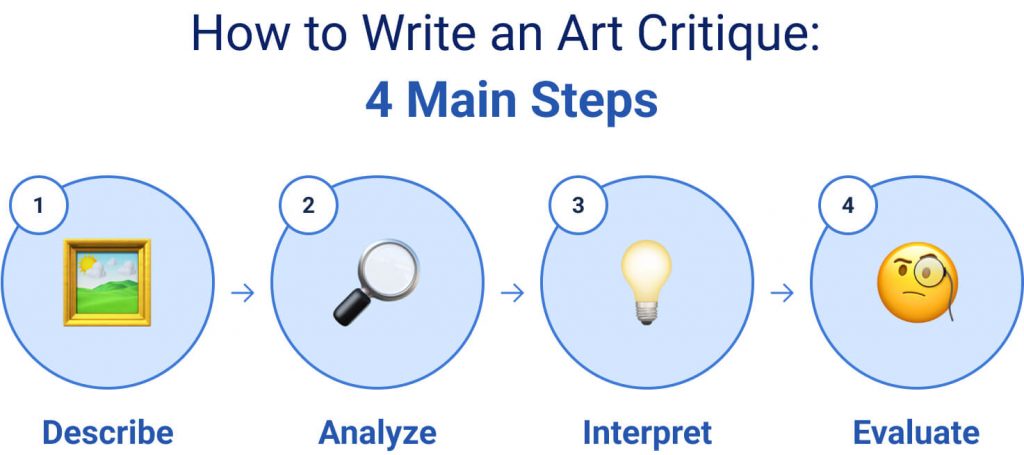
When working on a critique, you must include several components we’ll cover later:
- Description of the work.
- Artist’s intentions and analysis.
- Response and interpretation.
- Conclusions and evaluation.
This approach is also known as the Feldman model and is widely used in art. Let’s look at each part and its role in writing an excellent art critique.
Description of the Work
When making an art critique, examining the subject thoroughly is essential. Your first impression and initial response to the piece are critical, so take the time to absorb it. When evaluating an artwork, learn about its background (author, significance, prominent motifs , and techniques.) You can also discuss the work’s medium, brushstrokes, color scheme, or any other relevant details.
Next, address the content of the work: the scene, figures, and objects depicted on the canvas or in the sculpture. You can mention the size of the work, texture, lines, composition, and perspective. If you’re looking for excellent art to examine, check out Caravaggio’s The Calling of St. Matthew . It’s a masterpiece that combines light, shadow, expressions, and movement to tell a story in a single frame.
Artist’s Intentions & Analysis
After you’re done admiring the piece, it’s time to determine what makes it work. When going through your visual findings, try answering the reason behind their use. For example, why did the artist use a particular type of paint or composed the frame in a certain way? It helps to establish an artist’s intent behind their work.
To make a comprehensive art criticism essay, look at the larger context. Learn about the artist, what drove them to create, and the biggest influences on their work. This helps better understand why they chose to create a particular piece during a certain artistic period. For example, Carravagio made some of his best paintings as church commissions, hence the wide use of Christian symbolism in many of his works.
Response & Interpretation
Art critique essays often hyperfocus on the artist and their work, forgetting that, ultimately, spectators are the ones experiencing it. In this part of the analysis, share what feelings the painting or sculpture evokes in your mind. There are no wrong answers here, as everybody sees art from their perspective. Look past what the artist tries to depict and explain the meaning you see behind the art.
When evaluating a work of art, think about what it makes you feel (joy, anger, sadness, and so on.) Next, think about the area or figure that draws your attention. Note the artistic choices that brought the whole thing together. Addressing these things will make your analysis more comprehensive.
Conclusions & Evaluation
Remember that a criticism is largely a personal opinion based on your experience and interpretation. The conclusion section of the art criticism essay should also evaluate the effectiveness of the artist’s choices in creating the right impact on the viewers and seeing their vision through. Think about how the artwork made you feel, using personal thoughts and feelings.
Once everything is said, you have to provide a summary of the art piece. Don’t try to imagine what the person could have done with the work. Instead, evaluate what they achieved with it. When working on this part of the essay, analyze the author’s intention, whether they were successful, and whether the piece was worth evaluating.
🧐 Artwork Critique – 10 Questions to Ask
In addition to this guide, we would like to provide a set of questions that will help you with your art criticism essay. There’s no need to answer all of them in your work, but knowing about them won’t hurt. Whether you’re writing a work about one of the classical pieces or contemporary abstract art, these questions can guide you. They can help you overcome your writer’s block, provide new ideas, or ensure that you stay on the right track.
- Is the choice of colors balanced, or do they clash?
- Where is the horizon line placed, and how does it influence the work?
- How does the color scheme work to set the piece’s mood?
- Is the composition set to make the scene look three-dimensional?
- Are the elements of the art piece positioned the right way?
- What idea did the artist want to convey in the work?
- Does the author use light and shadow properly?
- How does the artist express human emotions?
- Are there any errors with the composition?
- What is the main focus of the artwork?
👩🎨 Helpful Tips for Writing Constructive Art Criticism Essay
Sometimes, it is challenging to describe some details or set the tone for a critical essay. So, we’ve picked tips to help you create the perfect analysis paper.
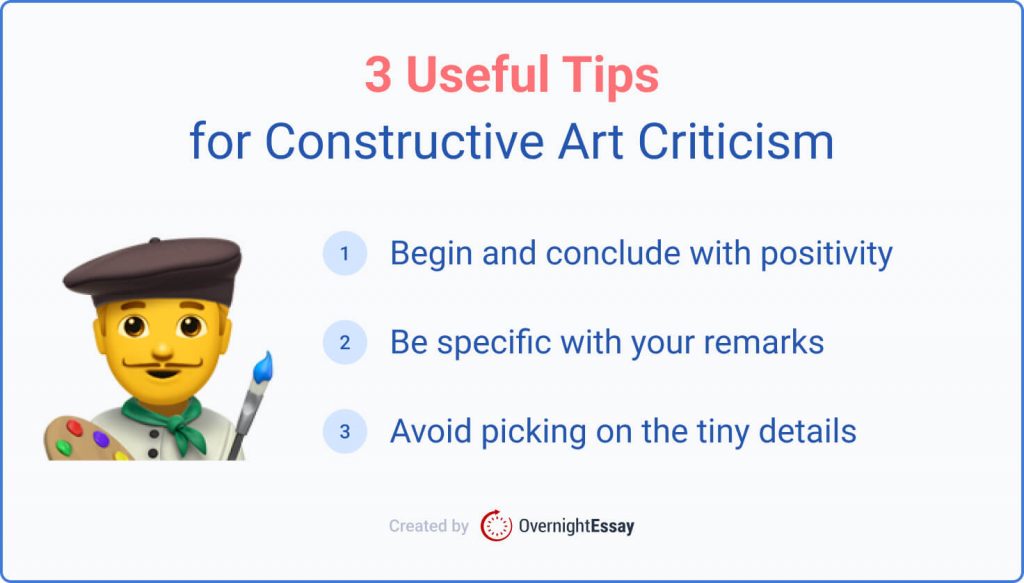
To provide a better understanding of writing an art criticism essay, we’d like to give you a couple of examples to think about. These small samples will help you choose the proper language and paragraph structure to create a good artwork analysis. We hope you’ll find our art critique essay examples inspiring.
Raphael’s Madonna in a Chair .
Rightfully admired as one of the best painters of the High Renaissance era , Raphael showed a human side of the divine, most notably in his works related to the Madonna and baby Christ. Even the small-scale Madonna in a Chair showcases his talent despite the size of the canvas. The title is a bit misleading, as its main focus is the Son of God. Here, he is depicted in the embrace of Mary, cradling him with both her arms. The piece heavily utilizes the U shape in the figures of the Madonna, Christ, and the praying child who’ll grow up to be John the Baptist. The latter looks at them with awe and adoration, hands clasped in prayer. As in all his works, Raphael depicted the Mother of Christ not as a divine figure but as a mother, fearful and protective of her child. A slight off-balance to the left makes this scene more warm and intimate, with Christ’s and Madonna’s shapes radiant with an inner light. The color scheme used lighter hues for parts of the shawl, dress, and cloth the baby was wrapped in. Raphael showed a true mastery of color, light, and shadow to capture the essence of motherhood. He deliberately dimmed the colors on the sides of the painting to make its centerpiece more vibrant and life-like. The rounded shape of the work accentuates the effect of looking at people through an open window. This is how the painter made it feel like we have witnessed the tender moment and have been discovered, with both Madonna and Christ looking at us.
A Bar at the Folies-Bergere by Edouard Manet.
Edouard Manet is a figure well-known to the admirers of the French impressionist movement. His works gave a rare insight into Paris’s everyday and social life during the mid-1800s. One of Manet’s later works, A Bar at the Folies-Bergère, continues this pursuit and takes us to the rowdy scene of a nightclub in the historical district of the capital. Instead of painting a vibrant scene, Manet focused on a single person working at the establishment’s bar. She’s a young woman (probably in her 20s) who stands behind the counter selling fruit and alcohol to the patrons of Folies-Bergère . Despite the atmosphere of the place, the woman looks detached from things happening around her. She’s the only person to have distinguishing features. Manet used multiple brushstrokes for each object to make them look distorted and out of focus. The further we get from the center of the piece, the blurrier the lines become. Sometimes, they turn into haze, erasing the lines between individuals. The use of dark and gray tones in the mirror’s reflection further emphasizes the cold feel of the place despite its intended atmosphere. In my opinion, the mirror lets the audience perceive the scene from the eyes of the woman as if we were the ones looking at the bar. The painting beautifully depicts two things: isolation and movement. Although visitors surround her, the person in the center of the image doesn’t seem to enjoy it. Her eyes are slightly cast down, perhaps in contemplation or daydreaming. Despite her state, the world carries on.
Artwork Critique: How to Choose Masterpiece for Analysis
In this section, we’ve compiled a little guide for picking the perfect piece of art for you to analyze. Check it out:
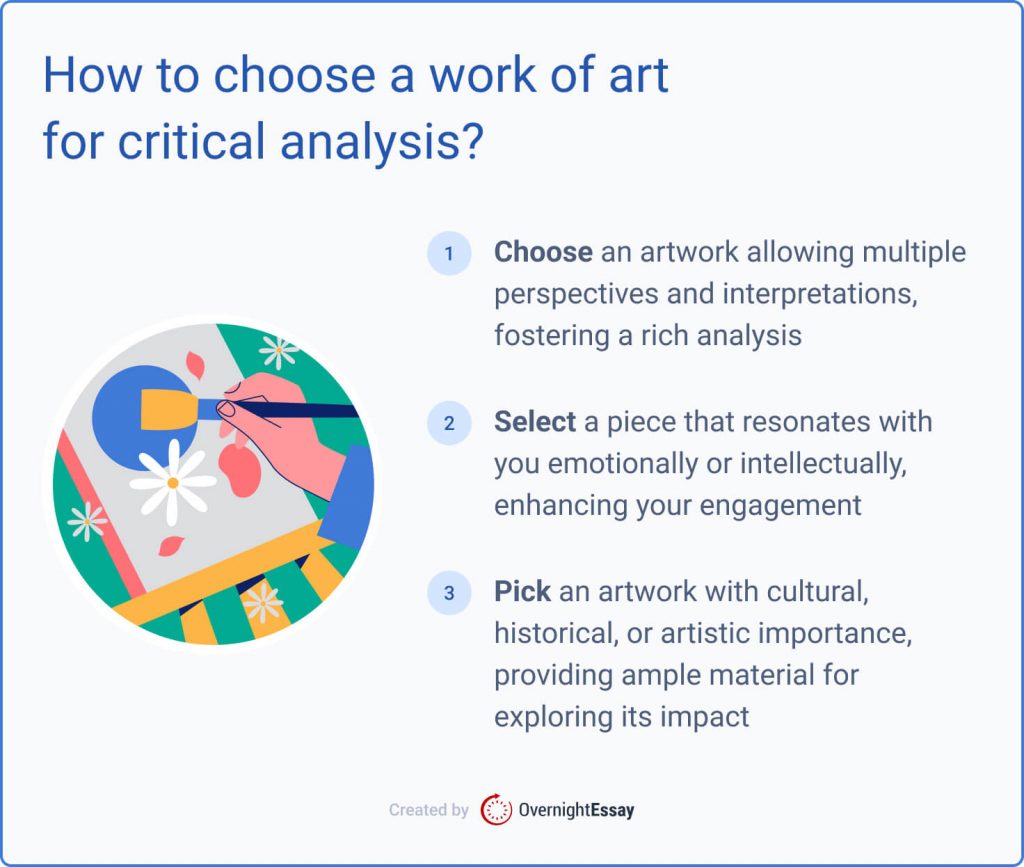
📌 Make preliminary research to understand different art forms, styles, or movements. It’s beneficial to familiarize yourself with artists’ backgrounds and historical context.
📌 Think about the themes and concepts you want to reveal in your analysis. Do you want to explore the artwork’s symbolism, aesthetic qualities, or historical significance?
📌 Select an artwork that personally resonates with you or piques your interest. A genuine connection with the piece will make the analysis more enjoyable and insightful.
📌 Consider exploring a diverse range of art periods. Analyzing a variety of artworks will broaden your perspective and enhance your critical analysis skills.
💡 Art Criticism Essay Topic Ideas
Finally, we’d like to offer a list of topics on which you can write your following critical paper. Perhaps here you’ll find something inspiring for your next piece of work.
- The role of Christian symbolism in Caravaggio’s works .
- Van Gogh’s Starry Night and the impressionist movement .
- Claude Monet’s Poppies : a study in perspective.
- Pablo Picasso’s Les Demoiselles d’Avignon and 20th century art.
- Explore the composition of Sandro Botticelli’s Adoration of the Magi .
- Describe the main focus of Raphael’s The School of Athens piece .
- Edward Hopper’s Nighthawks and social isolation .
- Evaluate the use of light and shadow in Rembrandt’s The Night’s Watch.
- How did Johannes Vermeer achieve the realistic effect in his Girl with a Pearl Earring portrait?
- Discuss the symbolism of The Creation of Adam by Michelangelo .
- What message did Hieronymus Bosch try to convey in The Garden of Earthly Delights ?
- Explore the minimalist style used in Georges Seurat’s A Sunday Afternoon on the Island of La Grande Jatte .
- Comparison of the Caravaggio, Bernini, and Rembrandt Artworks .
- Describe the artistic significance of Emanuel Leutze’s Washington Crossing the Delaware .
- The use of color in J. W. Waterhouse’s The Lady of Shalott .
- Explain the use of the perspective in Claude Monet’s Woman with a Parasol .
- Which techniques were used to paint the Sistine Chapel ceiling?
- Peter Paul Rubens’ The Raising of the Cross .
- Explore the use of color in Leonardo da Vinci ’s Mona Lisa .
- Which events are depicted in Delacroix’s Liberty Leading the People ?
- The Persistence of Memory and the surrealist movement.
- The Swing by Jean-Honoré Fragonard .
- Analyze The Great Wave of Kanagawa and its influence on the ukiyo-e genre.
- Wanderer above the Sea of Fog and solitude.
- Explore the themes of Pieter Bruegel’s The Hunters in the Snow .
- Claude Monet’s Water Lilies .
- Examine the use of color in Leighton’s Flaming June .
- How Renoir composed the scene in Bal du moulin de la Galette .
- A critical look at The Sistine Madonna .
- Gustav Klimt’s The Kiss.
Our guide will help you write a better art critique essay about ancient and contemporary masterpieces. We’re sure that it has all the answers you seek. And if you still need to come up with a topic, you can always try our essay topic generator.
- Guidelines for Analysis of Art. – UA Little Rock, School of Art and Design
- Art History Writing Guide. – Swarthmore College
- How to Critique a Work of Art. – Holland Central School District, Finalsite
- The Value of a Good Critique. – Georgia Schumacher, The Arts Institutes International
- How to Become an Art Critic in 5 Steps (Definition and FAQs). – Indeed
- 4 Reasons Critiques Need to Be Part of Your Curriculum. – Debi West, The Art of Education University
- Elemental Questions for Art Critique. – Lyric Montgomery Kinard
- How to Approach Writing Art Criticism. – Collin Kavanaugh, The Wheaton College Writing Center Blog
- Art Critique Vs. Art Bashing: How To Art Critique Right. – Nicole Adamson
- What is the Purpose of Art Criticism Today? – Elena Martinique, WideWalls
How to Write an Art Critique? Secrets of Expert Art Criticism
“Please do not shoot the pianist. He is doing his best – ” the note that Oscar Wilde saw in the dancing saloon in the Rocky Mountains. When he wrote about his impressions later, he said it was “the only rational method of art criticism.”
Indeed, the meaning of critique seems limited. People often focus on the drawbacks and flaws. But art critique is much more than highlighting just the negative sides of the work.
In this article, our team looked into the rules of art critique, spotted the most spread mistakes, and picked some excellent examples.
- 🔑 Art Critique Definition
- 🏆 The Challenges of Art Critique
- 🎓 Art Criticism Step by Step
- 🎨 Art Critique Examples
- ✅ Art Critique Checklist
🔑 What is an Art Critique?
An art critique is the analysis, evaluation, and interpretation of an art product. It is one of the fundamental parts of art studies. Art critics usually review artworks from the point of aesthetics or the theory of beauty. So, art critique aims to provide the rational ground for art perception and admiration.
🏆 Art Critique Challenges
Let’s start to learn this backward! We suggest you get to know the main challenges of the art review. A conventional image of critique is a process of describing weak aspects of an artwork. It’s essential to understand the critique is analysis, not naming things you don’t like.
Here are the five biggest challenges to overcome for an excellent art review:
- Don’t critique the style of the author.
- Don’t fill up your review with negative impressions only.
- Don’t be too subjective. Rely upon art history.
- Don’t demand from an artist to follow your recommendations.
- Don’t retell/describe the object. Add your comments and analysis.
#1 MYTH: Art Criticism Is Usually Negative
Performing the critique isn’t only about looking for failures. Though you can get confused by the semantic ambiguity of this word. For example, Mariam-Webster Dictionary offers the following definitions of ‘criticism’:
- The act of criticizing, usually unfavorably.
- The art of evaluating or analyzing works of art or literature; also: writings expressing such evaluation or analysis.
So, the latter definition proves that criticism doesn’t necessarily have a negative connotation.
Writing a Critique ≠ Listing What You Don’t Like
That’s great if you get a strong impression of an artwork. But for a good analysis, it’s not sufficient just to spot the points you find unsatisfactory. It’s essential to go deeper in reviewing. The point here is to set up a firm ground for the analysis based on objective analytical arguments.
For example, you can use art history facts to justify your opinion about a particular piece.
Critiquing Artwork ≠ Critiquing the Style
When you analyze an art product, it’s tempting to go off course and start criticizing the style. It’s one of the major challenges but you should stay solid. The author’s style is the basis for authenticity and self-expression. It’s a chosen path, not a mistake, remember that! However, if the author claims they work in a particular style, but the artwork doesn’t express that, it changes everything. In this case, you can compare the characteristics of the declared style and the features of the particular work.
Art Critique ≠ Just a Description
An art critique is also much broader than retelling and describing what you see , read or hear. Let’s say you are writing an essay or a review on Kerouac’s novel. You don’t have to retell the plot in detail. It’s not the point of the analysis.
Not more than 5% of your text can be dedicated to retelling.
The same rule is relevant for any other piece of art. Don’t say that The Venus of Milo lacks arms. Elaborate on reasons why it happened, conduct some comparative work.
🎓4 Steps of Art Criticism & 20 Questions to Answer
Alright, let’s dig deeper now! To compose a well-structured critique, you should consider the necessary constituents:
- Description.
- Interpretation.
- Evaluation.
The section below contains more than twenty helpful questions to build a fine art critique piece!
1. Writing a Critique Description
First, you should define and describe what is in front of you. Take a look, put down what you see, note some general details and facts.
We’ve prepared two examples to show better how to write an art critique step-by-step. Example 1 – David of Michelangelo, example 2 – Girl with a Pearl Earring by Johannes Vermeer.
2. Writing a Critique Analysis
3. writing a critique interpretation, 4. writing a critique evaluation, 🎨 how to critique art: different forms of artwork.
The variety of art forms is wide: sculpture, painting, cinematography, literature , music, and many others. Each of them has peculiarities in terms of critique evaluation.
We offer you to learn how to critique different art forms : sculpture, painting, movies, and architectural objects.
Sculpture Critique
The initial point is to define the basic facts:
- Who made the sculpture?
- The name or the title of the work.
- When was it carved?
- What is the place where it appeared.
With this information, you are ready to proceed with revealing broader information:
- Technical characteristics of a sculpture: its size and height, materials used, current state, its relation to other pieces.
- Study the sculpture’s subject(s): who or what is represented, the identity, and anatomic features. For example, you can consider posture and pose, face expression, and constitution.
- Reflect on how the sculpture fits the space around and what axis and lines are typical.
- Pay attention to colors and light and shadow balance.
- Carefully explore the details of execution: what technique is used? Did the artist polish the sculpture, or is it a roughly made historical artifact?
- What ideas and message does the work carry and deliver? Does it symbolize or embody anything?
Painting Critique
First, get the essential information:
- Who is the artist?
- What is the name of the painting?
- When did they create the artwork?
- Where were they working on it?
Keep on exploring the details asking the right questions:
- Who or what is depicted? If it’s a portrait, analyze the significance of age, gender, pose, clothes, accessories.
- Focus on the composition: how are objects arranged? What is in the background and the foreground?
- What style did the artist paint in? What are the techniques and means he used? Does the frame fit the painting?
- The colors, shades, and lights are significant in painting. Try to figure out what their role is.
- What is your emotional impression of the work? What feelings and thoughts appear when you’re looking at it?
A helpful tip: take a closer look at the image. Now try to step away to get the overall picture!
Film Critique
A helpful tip: don’t read other reviews and watch trailers before watching the movie. Why? It will allow you to preserve the purity of perception, and your experience will be unbiased.
Let’s see what has to be done for the sake of a good review:
- While watching the movie, don’t get distracted. Try to get absorbed with what is happening on the screen. Let your mind observe while emotions and thoughts flow naturally.
- You can take a couple of good notes to get back to the particular scene.
Once you’ve finished watching, you should reflect on the following details:
- Is the plot grasping, consistent? Does it make sense at all?
- Try to define the director’s message. What is the main idea of the film?
- How good was the cast? Are the characters deep and vivid enough? Are the dialogues believable and sensible?
- How was the movie shot and edited? Elaborate on the meaning of colors, soundtrack, visual effects, camerawork.
- What is your impression of the picture? Did it make you reflect and think?
Architecture Critique
To criticize architecture, one should have background knowledge of design and architecture itself. It is a bit less complex thing in terms of critique. The architecture critique will be arranged around the most fundamental and general criteria: the functionality of the building.
The analysis can be separated into different directions:
- Define the primary goal of the building. What was it constructed for? Is it a block of flats? Or a modern gallery? Does the construction serve its purposes?
- What is it made of? Explore the materials: wood, marble, concrete, glass. Try to figure out what role the particular material plays.
- Reflect on the forms and shapes: are they classical or modern?
- Does the building harmonically fit in the surrounding area? How balanced is this union?
- Does the building allow a person to move freely and easily in it? Does it have a transparent navigation system?
- How the natural light interacts with the construction? Is it lit enough?
🎨 What Is a Good Art Critique Example?
In the section below, you’ll see critique examples of different art products. We’ve prepared a movie review, a painting analysis, architecture, and a sculpture critique.
Study these illustrative critique samples to understand the critiquing art mechanism better.
Sculpture Critique Example
Ancient Indian and Greek Sculptures Comparison | Free Paper Examples This critique sample focuses on the comparison of ancient Indian and Greek sculptures. The subject of analysis is the difference between the style of depicting gods and humans in a statue. The identity of both cultures serves as a comparison base in the text. According to it, Ancient Indian sculpture reflects collectivism, while Greek sculpture displays individualism.
Painting Analysis Example
Portrait of Ginevra De’Benci by Leonardo da Vinci | Free Paper Examples This painting critique elaborates on features that make the image of Ginevra de Benci by da Vinci so remarkable. It studies painting techniques, setting details, and the sitter’s appearance. The analysis concludes that da Vinci created the portrait under the Flemish painting style influence. This peculiarity defines the portrait’s novelty.
Architecture Critique Example
Sydney Opera House Construction Project | Free Paper Examples The following text provides a broad critique of the Sydney Opera House. It touches upon why this construction is a failure in project management. The main issue is the budget overrun that occurred during the construction. At the same time, the analysis also shows the significance of the Sydney Opera House for Australia that cannot be denied.
Film Analysis Example
‘Glory’ – the Drama Movie by Edward Zwick | Free Paper Examples This movie review highlights the importance of Edward Zwick’s “Glory” as a historical drama. The critique explores its reasons, focusing on the movie’s credibility in historical facts. According to the text, this film contributed significantly to people’s awareness of black American soldiers’ role in the Civil War.
✅ How to Write an Art Critique: Checklist
Do you already feel like you can run a critique column in a famous art magazine?
Even if your plans are not that big, it’s good to revise everything we’ve found out today:
- Be honest, unbiased, and constructive when writing a critique. Artists are indeed sensitive creatures. Even if the author of the artwork passed away long ago, show your respect.
- Enlarge your background knowledge about the art form you are going to criticize. Your opinion is precious, but you should solidify it with authoritative sources.
- Remember that the focus of your critique is the art object, not the artist’s style.
- Consider the context! Don’t analyze an artwork separately from other essential things: epoch, circumstances, historical situation.
- Be precise in your reasoning. Often seemingly unimportant details about an artwork or an artist play a significant role.
- Don’t let your critique piece be the list of things you don’t like about the art product. It’s not the point of genuine critique.
- Take notes when you are getting your first impressions from the artwork. These immediate thoughts will help you construct your critique.
- Remember to interpret and analyze, not to retell and describe only.
- Try to figure out the author’s message: what idea did they want to get across?
- Express your own emotions, thoughts, and ideas about the analyzed work.
- How to Write an Art Review – What You Need to Know
- Critique vs. Criticism | Daily Writing Tips
- 7 Ways to Voice Criticism Without Being Negative | Inc.com
- How to analyze an artwork: a step-by-step guide for students
- Guidelines for Analysis of Art – Art and Design
- How to Analyze a Movie: A Step-by-Step Guide
Research Paper Analysis: How to Analyze a Research Article + Example
Film analysis: example, format, and outline + topics & prompts.

By Will Fenstermaker
June 14, 2017
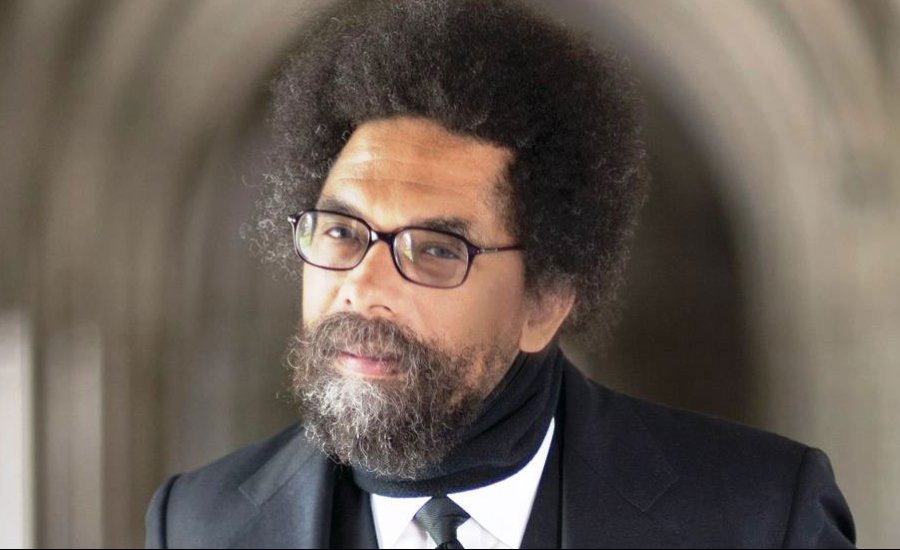
There has never been a time when art critics held more power than during the second half of the twentieth century. Following the Second World War, with the relocation of the world’s artistic epicenter from Paris to New York, a different kind of war was waged in the pages of magazines across the country. As part of the larger “culture wars” of the mid-century, art critics began to take on greater influence than they’d ever held before. For a time, two critics in particular—who began as friends, and remained in the same social circles for much of their lives—set the stakes of the debates surrounding the maturation of American art that would continue for decades. The ideas about art outlined by Clement Greenberg and Harold Rosenberg are still debated today, and the extent to which they were debated in the past has shaped entire movements of the arts. Below are ten works of criticism through which one can trace the mainstreaming of Clement Greenberg’s formalist theory, and how its dismantling led us into institutional critique and conceptual art today.
The American Action Painters
Harold Rosenberg

Harold Rosenberg, a poet who came to art through his involvement with the Artist’s Union and the WPA, was introduced to Jean-Paul Sartre as the “first American existentialist.” Soon, Rosenberg became a contributor to Sartre’s publication in France, for which he first drafted his influential essay. However, when Sartre supported Soviet aggression against Korea, Rosenberg brought his essay to Elaine de Kooning , then the editor of ARTnews , who ran “The American Action Painters” in December, 1952.
RELATED: What Did Harold Rosenberg Do? An Introduction to the Champion of “Action Painting”
Rosenberg’s essay on the emerging school of American Painters omitted particular names—because they’d have been unfamiliar to its original French audience—but it was nonetheless extraordinarily influential for the burgeoning scene of post-WWII American artists. Jackson Pollock claimed to be the influence of “action painting,” despite Rosenberg’s rumored lack of respect for the artist because Pollock wasn’t particularly well-read. Influenced by Marxist theory and French existentialism, Rosenberg conceives of a painting as an “arena,” in which the artist acts upon, wrestles, or otherwise engages with the canvas, in what ultimately amounts to an expressive record of a struggle. “What was to go on the canvas,” Rosenberg wrote, “was not a picture but an event.”
Notable Quote
Weak mysticism, the “Christian Science” side of the new movement, tends … toward easy painting—never so many unearned masterpieces! Works of this sort lack the dialectical tension of a genuine act, associated with risk and will. When a tube of paint is squeezed by the Absolute, the result can only be a Success. The painter need keep himself on hand solely to collect the benefits of an endless series of strokes of luck. His gesture completes itself without arousing either an opposing movement within itself nor the desire in the artist to make the act more fully his own. Satisfied with wonders that remain safely inside the canvas, the artist accepts the permanence of the commonplace and decorates it with his own daily annihilation. The result is an apocalyptic wallpaper.
‘American-Type’ Painting
Clement Greenberg
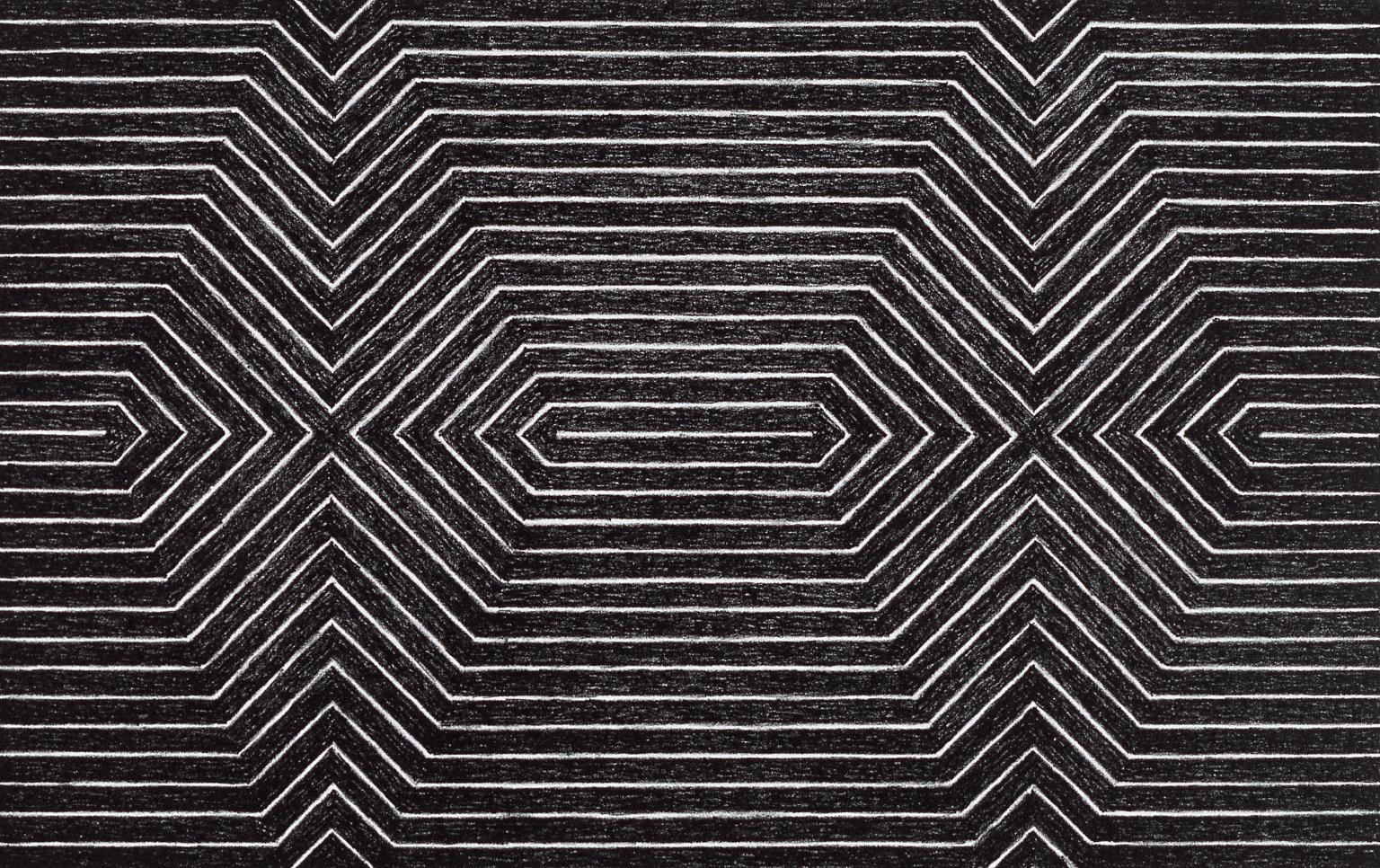
Throughout the preceding decade, Clement Greenberg, also a former poet, had established a reputation as a leftist critic through his writings with The Partisan Review —a publication run by the John Reed Club, a New York City-centered organization affiliated with the American Communist Party—and his time as an art critic with The Nation . In 1955, The Partisan Review published Greenberg’s “‘American-Type’ Painting,” in which the critic defined the now-ubiquitous term “abstract expressionism.”
RELATED: What Did Clement Greenberg Do? A Primer on the Powerful AbEx Theorist’s Key Ideas
In contrast to Rosenberg’s conception of painting as a performative act, Greenberg’s theory, influenced by Clive Bell and T. S. Eliot, was essentially a formal one—in fact, it eventually evolved into what would be called “formalism.” Greenberg argued that the evolution of painting was one of historical determinacy—that ever since the Renaissance, pictures moved toward flatness, and the painted line moved away from representation. Henri Matisse and Pablo Picasso were two of the landmarks of this view. Pollock, who exhibited his drip paintings in 1951, freeing the line from figuration, was for Greenberg the pinnacle of American Modernism, the most important artist since Picasso. (Pollock’s paintings exhibited in 1954, with which he returned to semi-representational form, were regarded by Greenberg as a regression. This lead him to adopt Barnett Newman as his new poster-boy, despite the artist’s possessing vastly different ideas on the nature of painting. For one, Greenberg mostly ignored the Biblical titles of Newman’s paintings.)
Greenberg’s formalist theories were immensely influential over the subsequent decades. Artforum in particular grew into a locus for formalist discourse, which had the early effect of providing an aesthetic toolkit divorced from politic. Certain curators of the Museum of Modern Art, particularly William Rubin, Kirk Varnedoe, and to an extent Alfred Barr are credited for steering the museum in an essentially formalist direction. Some painters, such as Frank Stella , Helen Frankenthaler , and Kenneth Noland, had even been accused of illustrating Greenberg’s theories (and those of Michael Fried, a prominent Greenbergian disciple) in attempt to embody the theory, which was restrictive in its failure to account for narrative content, figuration, identity, politics, and more. In addition, Greenberg’s theories proved well-suited for a burgeoning art market, which found connoisseurship an easy sell. (As the writer Mary McCarthy said, “You can’t hang an event on your wall.”) In fact, the dominance of the term “abstract expressionism” over “action painting,” which seemed more applicable to Pollock and Willem de Kooning than any other members of the New York School, is emblematic of the influence of formalist discourse.
The justification for the term, “abstract expressionist,” lies in the fact that most of the painters covered by it took their lead from German, Russian, or Jewish expressionism in breaking away from late Cubist abstract art. But they all started from French painting, for their fundamental sense of style from it, and still maintain some sort of continuity with it. Not least of all, they got from it their most vivid notion of an ambitious, major art, and of the general direction in which it had to go in their time.
Barbara Rose

Like many critics in the 1950s and 60s, Barbara Rose had clearly staked her allegiance to one camp or the other. She was, firmly, a formalist, and along with Fried and Rosalind Krauss is largely credited with expanding the theory beyond abstract expressionist painting. By 1965, however, Rose recognized a limitation of the theory as outlined by Greenberg—that it was reductionist and only capable of account for a certain style of painting, and not much at all in other mediums.
RELATED: The Intellectual Origins Of Minimalism
In “ABC Art,” published in Art in America where Rose was a contributing editor, Rose opens up formalism to encompass sculpture, which Greenberg was largely unable to account for. The simple idea that art moves toward flatness and abstraction leads, for Rose, into Minimalism, and “ABC Art” is often considered the first landmark essay on Minimalist art. By linking the Minimalist sculptures of artists like Donald Judd to the Russian supremacist paintings of Kasimir Malevich and readymades of Duchamp, she extends the determinist history that formalism relies on into sculpture and movements beyond abstract expressionism.
I do not agree with critic Michael Fried’s view that Duchamp, at any rate, was a failed Cubist. Rather, the inevitability of a logical evolution toward a reductive art was obvious to them already. For Malevich, the poetic Slav, this realization forced a turning inward toward an inspirational mysticism, whereas for Duchamp, the rational Frenchman, it meant a fatigue so enervating that finally the wish to paint at all was killed. Both the yearnings of Malevich’s Slavic soul and the deductions of Duchamp’s rationalist mind led both men ultimately to reject and exclude from their work many of the most cherished premises of Western art in favor of an art stripped to its bare, irreducible minimum.
How I Spent My Summer Vacation
Philip Leider

Despite the rhetorical tendency to suggest the social upheaval of the '60s ended with the actual decade, 1970 remained a year of unrest. And Artforum was still the locus of formalist criticism, which was proving increasingly unable to account for art that contributed to larger cultural movements, like Civil Rights, women’s liberation, anti-war protests, and more. (Tellingly, The Partisan Review , which birthed formalism, had by then distanced itself from its communist associations and, as an editorial body, was supportive of American Interventionism in Vietnam. Greenberg was a vocal hawk.) Subtitled “Art and Politics in Nevada, Berkeley, San Francisco, and Utah,” the editor’s note to the September 1970 issue of Artforum , written by Philip Leider, ostensibly recounts a road trip undertaken with Richard Serra and Abbie Hoffman to see Michael Heizer’s Double Negative in the Nevada desert.
RELATED: A City of Art in the Desert: Behind Michael Heizer’s Monumental Visions for Nevada
However, the essay is also an account of an onsetting disillusion with formalism, which Leider found left him woefully unequipped to process the protests that had erupted surrounding an exhibition of prints by Paul Wunderlich at the Phoenix Gallery in Berkeley. Wunderlich’s depictions of nude women were shown concurrently to an exhibition of drawings sold to raise money for Vietnamese orphans. The juxtaposition of a canonical, patriarchal form of representation and liberal posturing, to which the protestors objected, showcased the limitations of a methodology that placed the aesthetic elements of a picture plane far above the actual world in which it existed. Less than a year later, Leider stepped down as editor-in-chief and Artforum began to lose its emphasis on late Modernism.
I thought the women were probably with me—if they were, I was with them. I thought the women were picketing the show because it was reactionary art. To the women, [Piet] Mondrian must be a great revolutionary artist. Abstract art broke all of those chains thirty years ago! What is a Movement gallery showing dumb stuff like this for? But if it were just a matter of reactionary art , why would the women picket it? Why not? Women care as much about art as men do—maybe more. The question is, why weren’t the men right there with them?
Why Have There Been No Great Women Artists?
Linda Nochlin

While Artforum , in its early history, had established a reputation as a generator for formalist theory, ARTnews had followed a decidedly more Rosenberg-ian course, emphasizing art as a practice for investigating the world. The January 1971 issue of the magazine was dedicated to “Women’s Liberation, Woman Artists, and Art History” and included an iconoclastic essay by Linda Nochlin titled “Why Have There Been No Great Women Artists?”
RELATED: An Introduction to Feminist Art
Nochlin notes that it’s tempting to answer the question “why have there been no great women artists?” by listing examples of those overlooked by critical and institutional organizations (a labor that Nochlin admits has great merit). However, she notes, “by attempting to answer it, they tacitly reinforce its negative implications,” namely that women are intrinsically less capable of achieving artistic merit than men. Instead, Nochlin’s essay functions as a critique of art institutions, beginning with European salons, which were structured in such a way as to deter women from rising to the highest echelons. Nochlin’s essay is considered the beginning of modern feminist art history and a textbook example of institutional critique.
There are no women equivalents for Michelangelo or Rembrandt, Delacroix or Cézanne, Picasso or Matisse, or even in very recent times, for de Kooning or Warhol, any more than there are black American equivalents for the same. If there actually were large numbers of “hidden” great women artists, or if there really should be different standards for women’s art as opposed to men’s—and one can’t have it both ways—then what are feminists fighting for? If women have in fact achieved the same status as men in the arts, then the status quo is fine as it is. But in actuality, as we all know, things as they are and as they have been, in the arts as in a hundred other areas, are stultifying, oppressive, and discouraging to all those, women among them, who did not have the good fortune to be born white, preferably middle class and above all, male. The fault lies not in our stars, our hormones, our menstrual cycles, or our empty internal spaces, but in our institutions and our education.
Doctor, Lawyer, Indian Chief
Thomas McEvilley

One of the many extrapolations of Nochlin’s essay is that contemporary museum institutions continue to reflect the gendered and racist biases of preceding centuries by reinforcing the supremacy of specific master artists. In a 1984 Artforum review, Thomas McEvilley, a classicist new to the world of contemporary art, made the case that the Museum of Modern Art in New York served as an exclusionary temple to certain high-minded Modernists—namely, Picasso, Matisse, and Pollock—who, in fact, took many of their innovations from native cultures.
RELATED: MoMA Curator Laura Hoptman on How to Tell a Good Painting From a “Bogus” Painting
In 1984, MoMA organized a blockbuster exhibition. Curated by William Rubin and Kirk Varnedoe, both of whom were avowed formalists, “‘Primitivism’ in 20th Century Art: Affinity of the Tribal and the Modern” collected works by European painters like Paul Gaugin and Picasso with cultural artifacts from Zaire, arctic communities, and elsewhere. McEvilley takes aim at the “the absolutist view of formalist Modernism” in which MoMA is rooted. He argues that the removal tribal artifacts from their contexts (for example, many were ritual items intended for ceremonies, not display) and placement of them, unattributed, near works by European artists, censors the cultural contributions of non-Western civilizations in deference to an idealized European genius.
The fact that the primitive “looks like” the Modern is interpreted as validating the Modern by showing that its values are universal, while at the same time projecting it—and with it MoMA—into the future as a permanent canon. A counter view is possible: that primitivism on the contrary invalidates Modernism by showing it to be derivative and subject to external causation. At one level this show undertakes precisely to coopt that question by answering it before it has really been asked, and by burying it under a mass of information.
Please Wait By the Coatroom

Not content to let MoMA and the last vestiges of formalism off the hook yet, John Yau wrote in 1988 an essay on Wifredo Lam, a Cuban painter who lived and worked in Paris among Picasso, Matisse, Georges Braque, and others. Noting Lam’s many influences—his Afro-Cuban mother, Chinese father, and Yoruba godmother—Yau laments the placement of Lam’s The Jungle near the coatroom in the Museum of Modern Art, as opposed to within the Modernist galleries several floors above. The painting was accompanied by a brief entry written by former curator William Rubin, who, Yau argues, adopted Greenberg’s theories because they endowed him with “a connoisseur’s lens with which one can scan all art.”
RELATED: From Cuba With Love: Artist Bill Claps on the Island’s DIY Art Scene
Here, as with with McEvilley’s essay, Yau illustrates how formalism, as adapted by museum institutions, became a (perhaps unintentional) method for reinforcing the exclusionary framework that Nochlin argued excluded women and black artists for centuries.
Rubin sees in Lam only what is in his own eyes: colorless or white artists. For Lam to have achieved the status of unique individual, he would have had to successfully adapt to the conditions of imprisonment (the aesthetic standards of a fixed tradition) Rubin and others both construct and watch over. To enter this prison, which takes the alluring form of museums, art history textbooks, galleries, and magazines, an individual must suppress his cultural differences and become a colorless ghost. The bind every hybrid American artist finds themselves in is this: should they try and deal with the constantly changing polymorphous conditions effecting identity, tradition, and reality? Or should they assimilate into the mainstream art world by focusing on approved-of aesthetic issues? Lam’s response to this bind sets an important precedent. Instead of assimilating, Lam infiltrates the syntactical rules of “the exploiters” with his own specific language. He becomes, as he says, “a Trojan horse.”
Black Culture and Postmodernism
Cornel West

The opening up of cultural discourse did not mean that it immediately made room for voices of all dimensions. Cornel West notes as much in his 1989 essay “Black Culture and Postmodernism,” in which he argues that postmodernism, much like Modernism before it, remains primarily ahistorical, which makes it difficult for “oppressed peoples to exercise their opposition to hierarchies of power.” West’s position is that the proliferation of theory and criticism that accompanied the rise of postmodernism provided mechanisms by which black culture could “be conversant with and, to a degree, participants in the debate.” Without their voices, postmodernism would remain yet another exclusionary movements.
RELATED: Kerry James Marshall on Painting Blackness as a Noun Vs. Verb
As the consumption cycle of advanced multinational corporate capitalism was sped up in order to sustain the production of luxury goods, cultural production became more and more mass-commodity production. The stress here is not simply on the new and fashionable but also on the exotic and primitive. Black cultural products have historically served as a major source for European and Euro-American exotic interests—interests that issue from a healthy critique of the mechanistic, puritanical, utilitarian, and productivity aspects of modern life.
Minimalism and the Rhetoric of Power
Anna C. Chave

In recent years, formalist analysis has been deployed as a single tool within a more varied approach to art. Its methodology—that of analyzing a picture as an isolated phenomena—remains prevalent, and has its uses. Yet, many of the works and movements that rose to prominence under formalist critics and curators, in no small part because of their institutional acceptance, have since become part of the rearguard rather than the vanguard.
In a 1990 essay for Arts Magazine , Anna Chave analyzes how Minimalist sculpture possesses a “domineering, sometimes brutal rhetoric” that was aligned with “both the American military in Vietnam, and the police at home in the streets and on university campuses across the country.” In particular, Chave is concerned with the way Minimalist sculptures define themselves through a process of negation. Of particular relevance to Chave’s argument are the massive steel sculptures by Minimalist artist Richard Serra.
Tilted Arc was installed in Federal Plaza in lower Manhattan in 1981. Chave describes the work as a “mammoth, perilously tilted steel arc [that] formed a divisive barrier too tall to see over, and a protracted trip to walk around.” She writes, “it is more often the case with Serra that his work doesn’t simply exemplify aggression or domination, but acts it out.” Tilted Arc was so controversial upon its erecting that the General Services Administration, which commissioned the work, held hearings in response to petitions demanding the work be removed. Worth quoting at length, Chave writes:
A predictable defense of Serra’s work was mounted by critics, curators, dealers, collectors, and some fellow artists…. The principle arguments mustered on Serra’s behalf were old ones concerning the nature and function of the avant-garde…. What Rubin and Serra’s other supporters declined to ask is whether the sculptor really is, in the most meaningful sense of the term, an avant-garde artist. Being avant-garde implies being ahead of, outside, or against the dominant culture; proffering a vision that implicitly stands (at least when it is conceived) as a critique of entrenched forms and structures…. But Serra’s work is securely embedded within the system: when the brouhaha over Arc was at its height, he was enjoying a retrospective at the Museum of Modern Art…. [The defense’s] arguments locate Serra not with the vanguard but with the standing army or “status quo.” … More thoughtful, sensible, and eloquent testimony at the hearing came instead from some of the uncouth:
My name is Danny Katz and I work in this building as a clerk. My friend Vito told me this morning that I am a philistine. Despite that I am getting up to speak…. I don’t think this issue should be elevated into a dispute between the forces of ignorance and art, or art versus government. I really blame government less because it has long ago outgrown its human dimension. But from the artists I expected a lot more. I didn’t expect to hear them rely on the tired and dangerous reasoning that the government has made a deal, so let the rabble live with the steel because it’s a deal. That kind of mentality leads to wars. We had a deal with Vietnam. I didn’t expect to hear the arrogant position that art justifies interference with the simple joys of human activity in a plaza. It’s not a great plaza by international standards, but it is a small refuge and place of revival for people who ride to work in steel containers, work in sealed rooms, and breathe recirculated air all day. Is the purpose of art in public places to seal off a route of escape, to stress the absence of joy and hope? I can’t believe this was the artistic intention, yet to my sadness this for me has become the dominant effect of the work, and it’s all the fault of its position and location. I can accept anything in art, but I can’t accept physical assault and complete destruction of pathetic human activity. No work of art created with a contempt for ordinary humanity and without respect for the common element of human experience can be great. It will always lack dimension.
The terms Katz associated with Serra’s project include arrogance and contempt, assault, and destruction; he saw the Minimalist idiom, in other words, as continuous with the master discourse of our imperious and violent technocracy.
The End of Art
Arthur Danto

Like Greenberg, Arthur Danto was an art critic for The Nation . However, Danto was overtly critical of Greenberg’s ideology and the influence he wielded over Modern and contemporary art. Nor was he a follower of Harold Rosenberg, though they shared influences, among them the phenomenologist Maurice Merleau-Ponty. Danto’s chief contribution to contemporary art was his advancing of Pop Artists, particularly Andy Warhol and Roy Lichtenstein .
In “The End of Art” Danto argues that society at large determines and accepts art, which no longer progresses linearly, categorized by movements. Instead, viewers each possess a theory or two, which they use to interpret works, and art institutions are largely tasked with developing, testing, and modifying various interpretive methods. In this way, art differs little from philosophy. After decades of infighting regarding the proper way to interpret works of art, Danto essentially sanctioned each approach and the institutions that gave rise to them. He came to call this “pluralism.”
RELATED: What Was the Pictures Generation?
Similarly, in “Painting, Politics, and Post-Historical Art,” Danto makes the case for an armistice between formalism and the various theories that arose in opposition, noting that postmodern critics like Douglas Crimp in the 1980s, who positioned themselves against formalism, nonetheless adopted the same constrictive air, minus the revolutionary beginnings.
Modernist critical practice was out of phase with what was happening in the art world itself in the late 60s and through the 1970s. It remained the basis for most critical practice, especially on the part of the curatoriat, and the art-history professoriat as well, to the degree that it descended to criticism. It became the language of the museum panel, the catalog essay, the article in the art periodical. It was a daunting paradigm, and it was the counterpart in discourse to the “broadening of taste” which reduced art of all cultures and times to its formalist skeleton, and thus, as I phrased it, transformed every museum into a Museum of Modern Art, whatever that museum’s contents. It was the stable of the docent’s gallery talk and the art appreciation course—and it was replaced, not totally but massively, by the postmodernist discourse that was imported from Paris in the late 70s, in the texts of Michel Foucault, Jacques Derrida, Jean Baudrillard, Jean-François Lyotard, and Jacques Lacan, and of the French feminists Hélène Cixous and Luce Irigaray. That is the discourse [Douglas] Crimp internalizes, and it came to be lingua artspeak everywhere. Like modernist discourse, it applied to everything, so that there was room for deconstructive and “archeological” discussion of art of every period.
Editor’s Note: This list was drawn in part from a 2014 seminar taught by Debra Bricker Balken in the MFA program in Art Writing at the School of Visual Arts titled Critical Strategies: Late Modernism/Postmodernism. Additional sources can be found here , here , here (paywall), and here . Also relevant are reviews of the 2008 exhibition at the Jewish Museum, “Action/Abstraction: Pollock, de Kooning, and American Art, 1940–1976,” notably those by Roberta Smith , Peter Schjeldahl , and Martha Schwendener .

Related Articles
Know your critics.
Current Shows
Receive our award winning emails & enjoy 10% off your first purchase, thanks for signing up for our newsletter., that email has already been subscribed..
Now, personalize your account so you can discover more art you'll love.
a treasure trove of fine art from the world's most renowned artists, galleries, museums and cultural institutions. We offer exclusive works you can't find anywhere else.
through exclusive content featuring art news, collecting guides, and interviews with artists, dealers, collectors, curators and influencers.
authentic artworks from across the globe. Collecting with us means you're helping to sustain creative culture and supporting organizations that are making the world a better place.
with our art advisors for buying advice or to help you find the art that's perfect for you. We have the resources to find works that suit your needs.

INSIDER ACCESS TO THE WORLD'S BEST ART
Artspace offers you authentic, exclusive works from world-renowned artists, galleries, museums and cultural institutions. Collecting with us helps support creative culture while bringing you art news, interviews and access to global art resources.
COLLECT FROM 300+ GALLERIES & MUSEUMS
Sign in for personalized experiences, exclusive access to new works, special offers, invitations and features.
Collect the world's best
Sign up to view price and receive personalized experiences exclusive access to new works, special offers, invitations and features.
Thank you for signing up
Tailor your art, news & information to your preferences.
THANK YOU FOR SIGNING-UP TO ARTSPACE
Welcome to the world's premier online marketplace for fine art.
Enjoy 10% on your next purchase by using coupon code WELCOME10 at checkout.
THANK YOU FOR RETURNING TO ARTSPACE
The world's premier online marketplace for fine art.
Enjoy 10% on your next purchase by using coupon code PHAIDON10 at checkout.
Forgot your password?
Please enter your email below and we will send you a new password.
We've emailed you a new password. Sign In
Interested in Firstname Lastname?
To follow this artist and get updates on new work & exclusives, you must be signed into your Artspace account. Don't have one? Create one now.
You are now following first name last name
Interested in saving this work.
To save this work to your personal gallery and to access other features like this, you must be signed into your Artspace account.
prompt placeholder
The 10 Essays That Changed Art Criticism Forever
Share this article
Use this form to share great articles with your friends.
Enter your email
Enter your friend's email
Your message was sent
Thank you for sharing with your friends.
- Share on Facebook
- Share on Twitter
- Share on Pinterest
Your email has been submitted and a 10% off discount code sent to you. Next, personalize your Artspace experience by creating an account.
Please select the statement that best describes you:
- I am an existing collector.
- I am a new and aspiring collector.
Types of art that interest you
Select all that interest you:, partners you'd like to follow, enter or select all partners that interest you:.
Your preferences have been saved to your account. Update them at any time in your Preference Center
How it Works
How bidding works.
To place a bid, enter the maximum amount you are willing to pay for the work. Artspace will accept a bid at the next increment, and save any excess amount as a maximum bid. If you are outbid, we will continue bid on your behalf up to your maximum bid.
Bid Increments
Bidding increments increase at the following intervals:
- Below $400: $50
- Between $400 and $699: $100
- Between $700 and $1,499: $200
- Between $1,500 and $2,499: $300
- Between $2,500 and $4,999: $500
- Between $5,000 and $9,999: $1,000
- Between $10,000 and $19,999: $2,000
- Between $20,000 and $29,999: $3,000
- Between $30,000 and $49,999: $4,000
- Between $50,000 and $99,999: $5,000
- Above $100,000: $10,000
You will receive an email confirmation of your bid and when you are outbid.
If you are the winning bidder, you will be contacted 48 hours after of the close of the auction.
Maximum Bidding
Every bid submitted is treated as a maximum bid. You should always bid the maximum you are willing to spend for a work, though this does not necessarily mean you will pay that price. As the auction unfolds, we will increase your bid by increments to ensure you remain the highest bidder. If the winning amount is less than your maximum bid, you will pay the current increment. If your maximum bid no longer exceeds the current bid, you will receive an outbid notification email, and have the option to bid again.
In the case of multiple bidders placing the same maximum bid, the first person to place the maximum amount takes precedence as the highest bid until another bidder exceeds the maximum amount.
Buyer's Premium & Additional Charges
For Artspace Auctions winning bidders are charged a 15% Buyer's Premium on top of the hammer price. For Artspace Benefit Auctions, Buyer's Premiums are not applied. If they are, this will be clearly noted. Purchases made from all auctions, including benefit auctions, are subject to sales tax.
Winning bidders will be contacted within 48 hours to arrange shipping and to provide final price including commission, shipping, and taxes and duties when applicable. Promotion codes cannot be applied to auction works.
Auction Pre-Registration
Credit Card Validation
In order to secure a bid, please enter your credit card details below. We will not charge your card but only use it to validate your bid. We only need to validate your card once. You will be notified that you are the winning bidder before your card is charged, and you will have the option to change your payment method at that time.

Create an Artspace account
All our frames are manufactured in the USA, using eco-friendly & sustainably sourced engineered hardwood for durability and a uniform finish that is free of defects. Frames are available in Black or White Satin and Honey Pecan.
- White Satin
- Honey Pecan
- Black Satin
All prints are hinged to a conservation quality, acid-free and lignin-free Alpha Cellulose matboard, using an acid-free linen tape. The mat's surface paper is fade and bleed resistant and is attached to a conservation quality foam-core mounting board that will keep the work safe from deterioration over time. Artworks with a deckled or decorative edges will be floated on the matboard, with acrylic spacers to separate the art from the glazing. All mounting is fully reversible, without any potential damage to the art.
Acrylic Glazing
All of our frames come with picture quality .090 mm plexiglass, which blocks 66% of UV to prevent color fading from exposure to light, keeping your art protected for years to come. It is now considered the industry standard for artists, museums and galleries throughout the world.
For images up to 30" x 40"
- 1 1/4” wide, 3/4” deep, with a 2 1/2” wide mat.
- We generally leave 1/4” - 1/2” of paper showing around the image, to accommodate signatures and for visual appeal.
For sheet sizes larger than 30” x 40”
- Please contact an Artspace advisor for a custom quote.
Artists you'd like to follow
Enter or select all artists that interest you:.


How to Critique Art – An Easy Guide to Critiquing Art
What is an art critique example, and how does one learn how to critique art? While art critics may specialize in the field of analyzing, interpreting, and judging artworks, anyone who wishes to understand art on a deeper level will benefit from learning about critiquing art. This article will break down the various steps of critiquing art so that we gain a clearer understanding of how to critique art. Read more below as we examine art critique examples and history, as well as tips on how to provide feedback.
Table of Contents
- 1 How to Critique Art
- 2 A Brief History of Art Critique
- 3.1 Why Do Art Critics Need to Understand Forms of Art?
- 3.2 The Importance of Understanding the Art Fundamentals
- 4.1 Observing Art
- 4.2 Asking Questions
- 5.1 Identifying the Main Theme
- 5.2 Interpretation of the Artwork
- 5.4 Judging Artworks
- 6 Providing Feedback
- 7.1 What Is an Art Critic?
- 7.2 What Is an Art Critique Example?
How to Critique Art
Appreciating art is similar to the experience of appreciating music. For example, most people listen to music and enjoy the way it makes them feel, or perhaps it reminds them of a specific person or place. They may even enjoy the instrumentation and the lyrics of the song. Yet, music aficionados and critics will listen to the same piece of music and analyze it in an entirely different manner. They will perhaps analyze the song’s chord progressions and the arrangement of the instruments, or they will try to interpret the meaning of the song. Others will critique the overall engineering and production of the piece on a technical level. It is the same with art – while the masses enjoy how it makes them feel, art critics analyze works of art based on certain criteria by which they can all be equally measured.
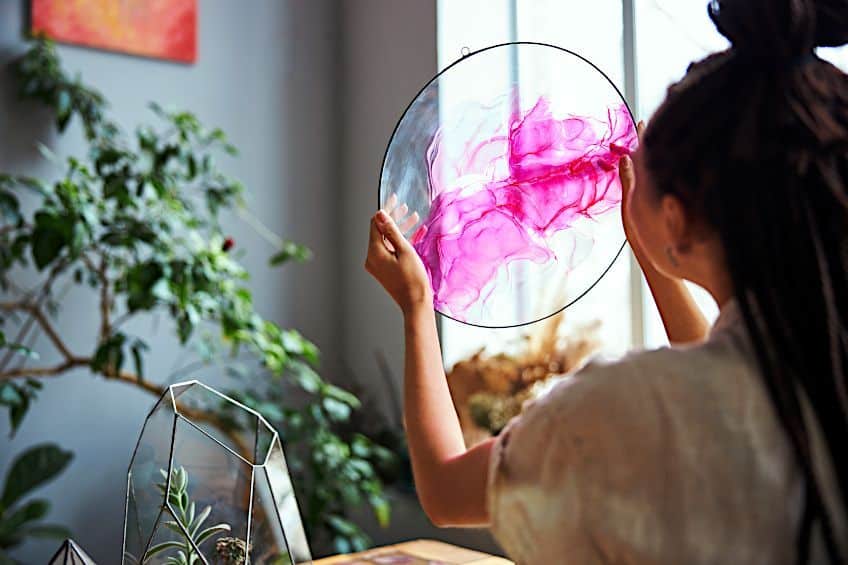
A Brief History of Art Critique
The history of the critique of art is a record of the reactions that produced a social and aesthetic change in the public perception and idea of art, sometimes justifying its shift in direction. As far back as antiquity, philosophers have theorized about and criticized art. Plato, for instance, considered art to be a less advanced type of knowledge, if not an outright illusion of it. While he too saw art as a sort of imitation, Aristotle approached art critique in a somewhat different manner.
He states clearly in his Poetics, possibly the most significant treatise on art ever written, that art is a moral matter as it deals with human character.
He contended that imitation is a human tendency, and thus, imitative works of art, regardless of media, can deeply impact and move people. Plotinus, an ancient philosopher, considered art as more mystical than just representational of the earthly, and he popularized the concept that art could be full of beauty and that its worldly beauty is a mirror of greater, divine beauty. In some ways, all art criticism that subsequently followed is an expansion of these three thinkers’ concepts, often in tandem: art can be viewed as imitation, moral and psychological, or spiritual.
Understanding Art Forms
Despite the fact that the philosophers mentioned above produced important, long-lasting concepts about art philosophy, they were not what we would consider art critics, but instead set the stage for it. Art criticism, although guided by theoretical philosophies, is inherently more specific than philosophical discussions about art. “What is art criticism if not the relationship between the intuition of a work of art and a principle of judgment?” Lionello Venturi once asked.

Generalized notions about art can guide the principle of judgment, but understanding the “intuition” of artwork requires getting down to the particulars. Art critics have a thorough understanding of the finer details that makes an artwork great. This knowledge ranges from understanding the artist’s intention to analyzing the technical aspects of the work. In order to do this, they require a thorough understanding of the various mediums with which artists work as well as an understanding of the fundamental principles of art , such as the elements of art.
Why Do Art Critics Need to Understand Forms of Art?
Art critics interpret and judge artworks for the population at large. Therefore, they must have a thorough understanding of the different forms of art they are analyzing, such as painting, sculpture, installations, sketches, and other mediums, in order to perform their role properly. This analytical expertise enables them to offer educated opinions and analyses on the techniques, composition, cultural importance, and aesthetic worth of artworks. For example, an art critic who is unfamiliar with painting would essentially be unable to grasp the nuances of a painting’s color palette choices, particular brushwork technique, or composition.
They would also potentially be uninformed of the historical background that shaped the creative process of the artwork, which can have a big impact on how it’s interpreted and appreciated.
The Importance of Understanding the Art Fundamentals
Not only do artist critics need to be informed about the various mediums and forms, but they also need to have an understanding of the fundamental art principles and theories. One cannot describe an artwork if one does not speak the language, and art critics need to be well-versed in the terms and techniques associated with the various art forms. For example, they need to study the elements of art, the principles of art, and the fundamentals of art , just to get a better understanding of the building blocks that artists use to produce their works.
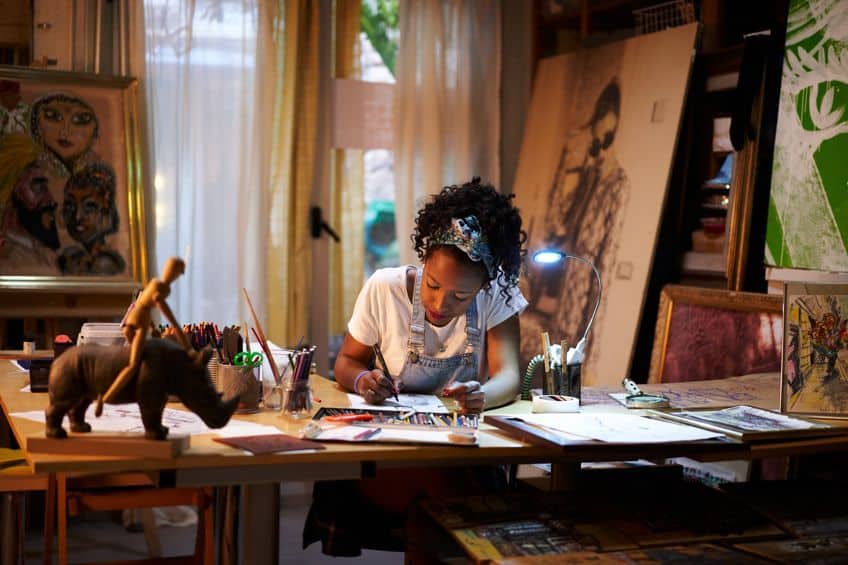
The Art of Observation
In art criticism, the act of attentively and thoughtfully analyzing artwork and acquiring information about its different features and characteristics is referred to as the art of observation. This involves examining the piece’s use of color, composition, textures, and underlying subject matter, in addition to its cultural, historical, and social contexts. This method entails looking beyond the artwork’s surface elements and analyzing its underlying meaning. The art of observation also entails engaging with the piece through one’s own sensory experiences and individual points of view.
This entails taking into account one’s intellectual and emotional reaction to the piece and using it as a foundation for subsequent analysis and interpretation.
Observing Art
Observing art is an important component of art critique, and it requires a thorough visual examination of the piece before going on to analysis and interpretation. An art critic will begin by taking a step back and viewing the piece as a whole, examining its general composition, colors, and shape. After that, they will walk closer to examine its nuanced details, paying special attention to the artist’s application of lines, forms, and textures. They will look at the media used in the piece, and consider how the artist utilized it to produce the piece.

Asking Questions
Observing art is all about asking questions. Art critics need to be able to describe a work, and they can do so by asking various questions about the work, relating to what the artist hoped to convey and if they did so effectively. They could ask questions about the context in which the work was made, how it compares to similar works, and its impact. They can observe the colors used and ask themselves questions about how the use of colors makes them feel, and what thoughts they evoke.
Asking the right questions is a useful tool when it comes to the next steps – analyzing and interpreting art.
Analysis of Art
When art critics analyze artworks, they usually follow a set of steps that help them gain a better understanding of the piece. For example, they may first want to identify the main themes of the artwork. Then they would begin to interpret those themes and the various messages and symbols within the work. They will also analyze the style of the artwork, and how it fits into a specific period of time. They will initially mentally divide the sections or elements by considering the textures, shapes, use of light and dark or vivid and dull colors, linework, and sensory attributes. They will examine the most fundamental art principles that were applied in the artwork at this stage.

Identifying the Main Theme
While the subject matter of artwork can often be clearly conveyed, sometimes the underlying themes can be missed or misinterpreted. A good art critic knows what to look for in a work that reveals its underlying themes and messages. The artwork’s subject matter is typically a good place to start when looking for a piece’s themes. If the artwork represents a historical event, for instance, it may allude to themes of power, war, or social injustice.
Art critics can also search for recurrent motifs or symbols, such as repeated patterns or the incorporation of specific meaningful objects. The artwork’s composition can even reveal information about its underlying themes. Asymmetrical works, for instance, can imply themes of instability.
Interpretation of the Artwork
Based on what you know so far about the piece, what do you believe the artist was attempting to convey? This is the question that art critics ask themselves at this stage of analysis. Besides the artist’s intention, how did you react to it? What was your emotional response and did it trigger something deeper within when you viewed it? Was the artist successful in conveying what he wanted to? Interpreting an artwork is not only based on your own reaction but also a consideration of how it fits into the era and style in which it was made. How does it compare to other works from the same movement, and did it offer anything new to the style it was produced in?

That brings us to the question of style. While artwork can be produced using certain aesthetic elements derived from art styles, not all art falls into a style or movement, such as outsider art, and needs to be appreciated for its unique aspects. Even so, art critics can still apply the same set of criteria they would with established styles to analyze how it was produced, such as its use of complementary colors , the quality of the linework, the shading, textures, and so on.
The importance of critiquing styles is that it often results in the emergence of new styles in reaction to older styles that are deemed too outdated and restrictive, allowing innovative and fresh ideas to flourish.
Judging Artworks
The first step of judging a work is using the various criteria that one would use to assess the work on a technical level. Following that, you are then able to make your own judgment after considerable observation, analysis, and interpretation of the piece in question. This is your personal assessment based on your perspective of the work of art. Why do you believe this work has inherent quality? What is the work of art’s worth to you? Is it, for instance, an aesthetically pleasing work of art that conveys an essential social message, influences how I perceive the world, draws perceptive connections, or confirms a religious belief? Do you believe the work communicates a valuable concept, sentiment, or principle to others? Could the improper use of the various elements of art be the source of your dissatisfaction with the piece?
Providing Feedback
While any critique in general can be viewed as negative, this is not always the case. Art critics are also able to impart useful and constructive criticisms that can potentially help an artist improve their works. In fact, one does not even need the word of an art critic; artists often critique each other’s work, as well as their own, by stepping back during the process and asking themselves whether the work adheres to fundamentals, such as scale and perspective, and if they are applying the elements and principles of art effectively.

That concludes our article on how to critique art. As we have discovered, critiquing art is not simply about whether a person likes or dislikes a piece, but is more about the criteria that critics use to assess a piece of art and determine its value. Critiquing art is not about finding fault with works of art, but learning how to appreciate them on a deeper level.
Frequently Asked Questions
What is an art critic.
An art critic is similar to a film critic – they examine the work and determine its significance and value by analyzing it. Art critics need to have a fair amount of knowledge of how art is created and its history in order to effectively critique it. However, it is not only for specialists, as anyone wishing to learn how to appreciate art should learn how to critique it properly too.
What Is an Art Critique Example?
Any artwork can be critiqued using the method above, such as Pablo Picasso’s Guernica (1937). We can observe the subject matter and gain an understanding of the historical context. We can analyze the anguished and contorted figures for clues on the themes, and we can interpret it as a statement against war. We can then judge it based on his skill as an artist and his ability to convey a message.

Nicolene Burger is a South African multi-media artist, working primarily in oil paint and performance art. She received her BA (Visual Arts) from Stellenbosch University in 2017. In 2018, Burger showed in Masan, South Korea as part of the Rhizome Artist Residency. She was selected to take part in the 2019 ICA Live Art Workshop, receiving training from art experts all around the world. In 2019 Burger opened her first solo exhibition of paintings titled, Painted Mantras, at GUS Gallery and facilitated a group collaboration project titled, Take Flight, selected to be part of Infecting the City Live Art Festival. At the moment, Nicolene is completing a practice-based master’s degree in Theatre and Performance at the University of Cape Town.
In 2020, Nicolene created a series of ZOOM performances with Lumkile Mzayiya called, Evoked?. These performances led her to create exclusive performances from her home in 2021 to accommodate the mid-pandemic audience. She also started focusing more on the sustainability of creative practices in the last 3 years and now offers creative coaching sessions to artists of all kinds. By sharing what she has learned from a 10-year practice, Burger hopes to relay more directly the sense of vulnerability with which she makes art and the core belief to her practice: Art is an immensely important and powerful bridge of communication that can offer understanding, healing and connection.
Nicolene writes our blog posts on art history with an emphasis on renowned artists and contemporary art. She also writes in the field of art industry. Her extensive artistic background and her studies in Fine and Studio Arts contribute to her expertise in the field.
Learn more about Nicolene Burger and the Art in Context Team .
Cite this Article
Nicolene, Burger, “How to Critique Art – An Easy Guide to Critiquing Art.” Art in Context. May 12, 2023. URL: https://artincontext.org/how-to-critique-art/
Burger, N. (2023, 12 May). How to Critique Art – An Easy Guide to Critiquing Art. Art in Context. https://artincontext.org/how-to-critique-art/
Burger, Nicolene. “How to Critique Art – An Easy Guide to Critiquing Art.” Art in Context , May 12, 2023. https://artincontext.org/how-to-critique-art/ .
Similar Posts

Why Study Art? – The Power to Unleashing Creativity

12 Principles of Animation – Learn the Fundamentals of Animation
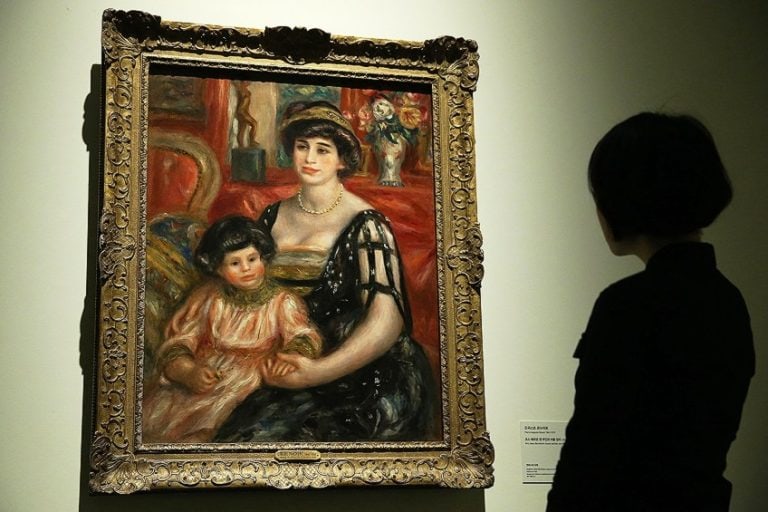
What Is the Purpose of Art? – Find the Purpose and Function of Art

How to Make an Art Portfolio – What Is an Art Portfolio Used For?

How to Name a Painting – The Importance of Titling Artwork
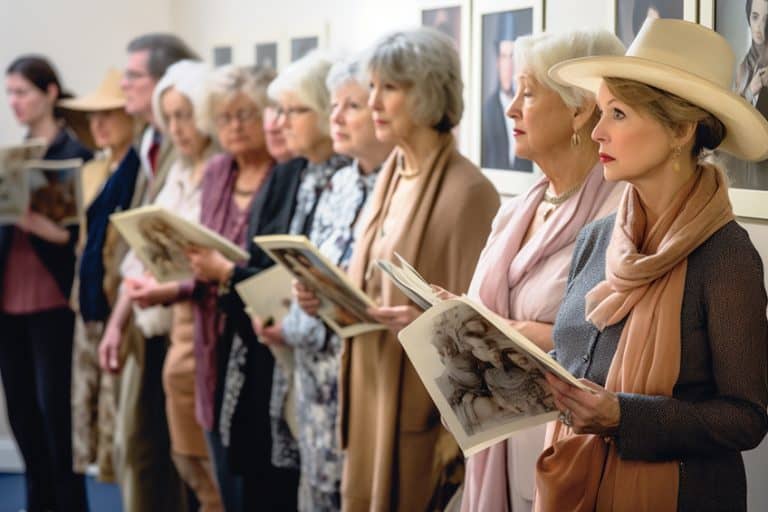
What to Wear to an Art Show – Appropriate Art Gallery Outfits
One comment.
Hi Nicolene, I am thinking of quoting and using your blog “How to Critique Art” on my own blog. My insight will be about differentiating “human generated art” and “machine generated art” that are two different things to critique and evaluate, differently (in substance). Frederic.
Leave a Reply Cancel reply
Your email address will not be published. Required fields are marked *
Save my name, email, and website in this browser for the next time I comment.
The Most Famous Artists and Artworks
Discover the most famous artists, paintings, sculptors…in all of history!

MOST FAMOUS ARTISTS AND ARTWORKS
Discover the most famous artists, paintings, sculptors!


- SCAD Libraries
- Research Guides
- Course Guides - Legacy
- ARTH 702 - Art Criticism
- Analyzing and Critiquing Art
ARTH 702 - Art Criticism: Analyzing and Critiquing Art
- Conducting Research
- Find Articles
- Find Images
- Evaluate Sources
- Writing and Citing
Feldman's Model of Art Criticism
What is a critique.
A critique is an oral or written discussion strategy used to analyze, describe, and interpret works of art. Critiques help students hone their persuasive oral and writing, information-gathering, and justification skills.
Description
Describe the work without using value words such as "beautiful" or "ugly":
- What is the written description on the label or in the program about the work?
- What is the title and who is (are) the artist(s)?
- When and where was the work created?
- Describe the elements of the work (i.e., line movement, light, space).
- Describe the technical qualities of the work (i.e., tools, materials, instruments).
- Describe the subject matter. What is it all about? Are there recognizable images?
Describe how the work is organized as a complete composition:
- How is the work constructed or planned (i.e., acts, movements, lines)?
- Identify some of the similarities throughout the work (i.e., repetition of lines, two songs in each act).
- Identify some of the points of emphasis in the work (i.e., specific scene, figure, movement).
- If the work has subjects or characters, what are the relationships between or among them?
Interpretation
Describe how the work makes you think or feel:
- Describe the expressive qualities you find in the work. What expressive language would you use to describe the qualities (i.e., tragic, ugly, funny)?
- Does the work remind you of other things you have experienced (i.e., analogy or metaphor)?
- How does the work relate to other ideas or events in the world and/or in your other studies?
Judgment or Evaluation
Present your opinion of the work's success or failure:
- What qualities of the work make you feel it is a success or failure?
- Compare it with similar works that you think are good or bad.
- What criteria can you list to help others judge this work?
- How original is the work? Why do you feel this work is original or not original?
Source: Kennedy Center Digital Resource Library
Analyze a Work Of Art
When analyzing a work of art, it's helpful to develop and apply a list of relevant questions. Consider:
- Subject matter - What is being depicted? (May require researching a related place, figure or event - e.g. from religion or mythology)
- Material and form - What is the size, shape, line, texture, color, etc.? How do these affect the way you "see" the subject?
- Social and historical contexts - When, where, and why was the work made?
- What were the artist's intentions (if known)?
Barnet's A Short Guide to Writing About Art provides many useful examples of analytical questions and is a required/recommended text for most Art History courses.
Visual Analysis Resources
- Handout: Getty Museum - Basic Elements of Art Guide
via Smarthistory
Elements of Art
More on the Elements of Art...
- Line
- Shape and Form
- Color
- Space
- Texture
- Surface and Depth
- Light and Shadow
More on the Principles of Composition...
- Balance, Symmetry, & Emphasis
- Proportion and Scale
- Pattern, Repetition, and Rhythm
Recommended Readings
- << Previous: Evaluate Sources
- Next: Writing and Citing >>
- Last Updated: Dec 6, 2023 3:44 PM
- URL: https://scad.libguides.com/arth702
How to Write an Art Critique Essay

Table of Contents
Writing an art critique essay.
While in college students are expected to be professionally equipped with the necessary writing skills in order to be proficient in essay writing . Unlike high school, paper writing is a mandatory task in college. One cannot opt not to write since it is part of their academic progress and it reflects greatly on their performance. When writing an essay, every student is expected to know what type of paper they are writing and what is required for that essay. Though every paper has almost the same structure, it is essential to know and understand that they are written for different purposes.
What is an art critique essay?
Many students find writing rather challenging due to the difficulty of comprehending what the paper requires. Before you start writing any essay, it is important that you first know the kind of essay you are writing. An art critique essay is a paper comprising detailed analysis and evaluation of an artwork. Additionally, it is through the analysis that you comprehend the goal of the artist. When one is asked to analyze an artwork, the observations he would come up with will be different from that of another person. Writing an art critique essay might be rather problematic to some students but since its features are similar to that of any other paper, one can easily be able to handle writing one. The features of an art analysis’s structure include:
- An introduction . This is where you give basic information about the artist, the art and the features of the artwork such as title, materials used and location.
- A thesis . This is where you come up with an argument about the piece of art. This will help reflect your vision on the piece of art.
- A body . This is where you fully describe the intent of the artist. You can also explain the artwork from your first impression and reaction.
- A conclusion . This is where you provide your evaluation of the piece of art. Through your analysis and interpretation, coming up with a final judgment is quite easy.
How to start an art critique essay
To start writing an art analysis, you need to understand its main features. Additionally, this will help you establish a clear and precise outline which simplifies the writing process. Below are some tips to consider before starting writing an art critique essay.

Tips on how to start
- Identify the theme being communicated in the art. This is the first step when writing an art critique essay. It helps you have an idea of what the piece of art is about.
- Create an outline. This will help you recognize the artist and the features of his work; the materials used and the location.
- Develop a thesis statement. This is essential as it will help you have a guiding idea reflecting on your paper from your impression and reaction of the art.
How to write an outline
Writing the outline of an art critique essay is quite simple if you have an idea on how to start writing it. Establishing an outline enables you to easily write your essay and provide its smooth and easy flow. Creating an outline for an art critique essay is as simple as that of any other essay. It entails an introduction, a thesis statement, a body, and a conclusion.
How to write a thesis for an art critique essay
A thesis statement is essential in writing an art critique essay. The vitality of developing one is that it not only helps build up your essay but also guide you through writing the entire paper. Moreover, through the thesis statement, your audience will find it easy to read your whole paper.
How to write an introduction
The introduction of any essay is what shows the beginning of your paper. To write the introduction of an art critique essay, you should start with a strong hook which catches the eye of your audience. This will keep them enthused and interested in reading your writing.
Tips on how to write an introduction and thesis
The introduction of an art analysis shows your audience the beginning of your article whereas the thesis guides them through the entire essay. Below are some tips to consider when writing the introduction and thesis of an art critique essay:
- Start with a strong hook. This way, your reader(s) will focus on your paper and want to read more of it.
- Have a clear and specific introduction. This will help your audience understand what your paper is about.
- Develop a strong thesis statement. This will help you have a guiding notion which will reflect your vision of the artwork.
How to write body paragraphs
With the help of a thesis statement, you are able to come up with concrete body paragraphs detailing the analysis from the observation you have made. To write good body paragraphs you need to have a full description of the piece of art. Additionally, it is the body paragraphs where you embrace the analysis and interpretation of your work.
Tips on body writing
Below are some tips to ponder on when writing the body of an art analysis:
- Begin each paragraph with clear and precise sentences. This makes your article more appealing to your audience and easier to read.
- Denote your first impressions. This will help you explain the reaction you got from viewing the art piece.
- Study the features used by the artist. This will help you have the correct choice of words to use when writing.
- Identify the focus of the work. Identify what captures your most. This will help you discover the artist’s point of emphasis and the purpose of the art piece.
- Interpret the work. Having identified the purpose of the art piece, interpreting becomes easy. However, you ought to back up your interpretation with evidence from your description and analysis. This will help your audience comprehend your paper easily.
How to finish an art critique essay
When concluding an art analysis, always remember that you are providing your audience with the final judgment or evaluation of your work. To write the conclusion of an art critique essay, provide a summary of all the information you have gathered from the description, analysis, and interpretation of your art piece.
Tips on conclusion writing
Below are some tips to put into consideration when writing the conclusion of an art critique essay:
- Describe whether the art is successful or not. Use your first impression to do it.
- Explain how you have come up with your evaluation. This will enable your reader(s) understand how you make the judgment.
- Provide a summary of why you think the art is a success or not. Based on the analysis, interpretation and evidence explain to your audience why you have come up with that evaluation.
Tips on revision
Going through your paper once, checking everything is indeed important. The significance of revising your paper lies in ensuring that you provide quality work to your reader(s). It helps you correct your paper and make it exceptional.
The following tips are essential when revising your paper:
- Ensure that the details you have provided are based on the piece of art.
- Certify that the interpretation you have given has supporting evidence.
- Warrant that your essay has a smooth and easy flow and that your information is not contradictory.
Art critique essay sample
The dance of life.
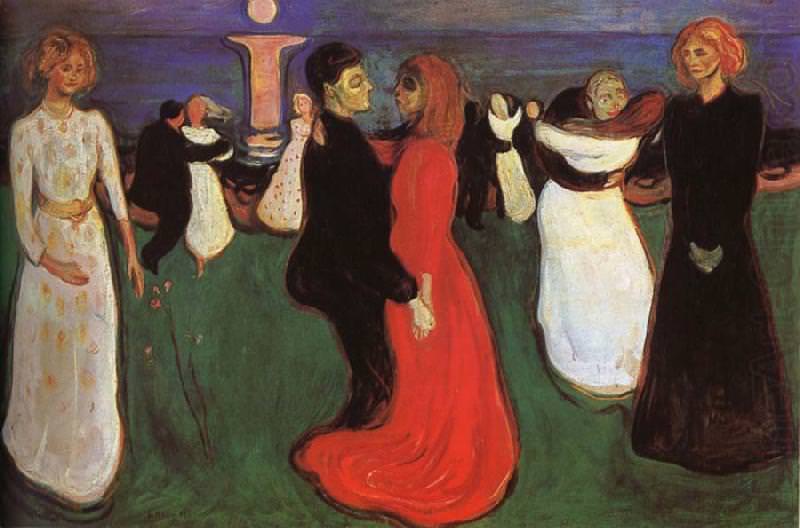
The ‘Dance of Life’ art was painted in 1899-1900 by Edvard Munch. In his painting, Munch presents women dressed differently and seemingly dancing with different men. In the background, there is a sea. The women in the portrait seem to be in different stages of their lives with the one in black seemingly the oldest and thus the most experienced in life. These women, according to Munch, were drawn to symbolize portraits of his lover Tulla Larsen. The image is quite suggestive and seems to hold a hidden message.
The different dressing used by the women in the picture symbolized different stages of their lives. The woman dressed in white represents the virgin, the one in red represented the carnal woman and the aged woman in black represents the satanic woman. Additionally, the sea in the background reveals something that is beyond reach. This could mean or represent the uncertainty that engulfs mankind as they live their lives. In addition, this clearly exemplifies the unknown; that which mankind does not know or comprehend about life or that which mankind does not know exists beyond life after death. This indicates that one did not know how far their lives were to go before their deaths. The portrait clearly shows or symbolizes the playing out of earthly life and the varying stages of the same.
In the background, a lone woman stands in front of a symbol representing the reflection of the setting sun while multiple men hang around another woman in white. This represents or shows the stage in life where one is on the search for a partner but finds it hard to get one.
Looking at the right middle ground, a male figure looks like his using force or trying to forcefully dance with the woman in white who appears to be leaning back. Most people who have analyzed this image seem to believe that the male figure embodies the caricature of the playwright Gunnar Heiberg.
The male figure and the female figure in red in the foreground represent Munch and Larsen. They appear to be physically contiguous and symbolically entangled through the shapes of the lower part of their bodies. However, their faces seem to indicate their separation from each other. This clearly shows how separated they are from the moment.
In conclusion, the art seems to be a good piece which clearly symbolizes the different stages of life.
related articles

How To Write A Short Essay Read More »

How To Write a Informative Essay Read More »

How Many Words is a Perfect Essay? Read More »

How to Critique Art
Critique is a fundamental part of the artistic process, providing artists an opportunity to get a fresh pair of eyes on their artwork.
- 1 min. version (Discord critiques)
- 1 min. version (dealing)
- 1 min. version (why critiques matter)
- 1 min. version (Jordan self-critique)
- 3 min. version (summary)
- 34 min. version (discussion)
This video explains concrete, practical strategies that both art teachers and art students can apply to group critiques in the classroom.

Discussion led by Art Prof Clara Lieu and Teaching Artists Cat Huang, Lauryn Welch , and Casey Roonan .
Prof Lieu’s Tips

Critique is an essential component of the artistic process. This tutorial will demonstrate and explain concrete, practical strategies for both art teachers and art students which they can apply in their artistic process.

A wide range of critique formats will be shown and explained: one-on-one art critiques, small group art critiques, methods for self-critique, large group art critiques within an art class, and more.
For every art teacher, leading art critiques during an art class is an ongoing challenge.

Every student, every artwork, and every art critique is different. In the context of any art critique, teachers need to be alert, responsive, and ready to handle any circumstance that arises in the conversation.

Art students have their own challenges as participants in a group critique, how do you speak articulately about your own artwork? How do you make comments that are tactful and that will impact your peers in a positive way?
This video provides a comprehensive look at critiquing art.
Video Walkthrough
- What is an art critique?
- First critique is important
- The need for engagement
- Set ground rules
- Students need to back up their points
- Positive feedback
- Be candid & constructive
- Separate yourself from your art
- Listen & be less defensive
- Critique is a “test”
- Critique formats
- Be fair with time
- Split the class when needed
- What to critique: t humbnail sketches , or the final art?
- In-progress critiques catch mistakes
- One-on-one critiques
- Consider skill & subject
- Stick to the prompt
- Set aside personal bias
- Get many opinions
- Take initiative
- Use simple language
- When students don’t talk
- Negative social dynamics
- Keep calm & control the situation
- Facing an inactive class
- Don’t ignore rude behavior
- Shut down inappropriate topics
- Let a student take time when emotional
- Sensitive topics are necessary
- Warn students of offensive work
- Do research before showing the final piece
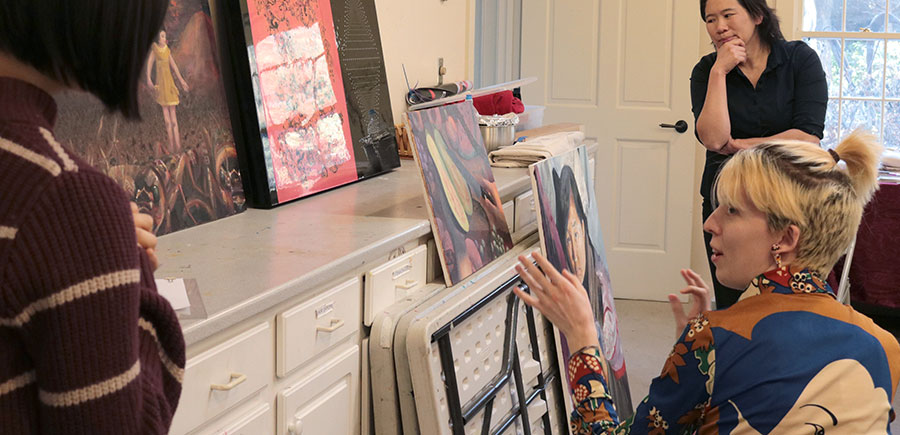
Blue Wolf Spirit’s Tips

Art Prof has a number of videos on how to perform an art critique. And for most people, they follow the rules and give other members 3 crits for every post of their own in the crit channel.
Some do it to “follow the rules” and others do see that providing crits to fellow members generates positive community interactions.
People appreciate being “seen” and often tend to respond to the same members that responded to them. But there are more benefits to critiques than may be apparent.

The most useful benefit is that you are training your eyes and mind. With each critique, you are learning how to look at art and see things you like and things that you don’t like so much.
You notice the “vibe” or the feeling the piece generates. With practice you can see tangents, perspective and proportion. If there are colors, you can see if they work well together or distract from the piece.

You get used to looking at a color snapshot of a piece and turning it into a black and white photo so you can better see the values.
You make sure in each piece you have a range of values/tone – from the darkest darks to the lightest lights.
And with all that information in your head, you can look at your own work and run through that checklist. So each time you give someone else a critique, know that you are gaining something too.

You are working your “art brain muscle” to be able to identify areas in your own art that may need a little more work or attention. Critique of someone else’s art makes your art better.
The other benefit that you can realize from exercising your crit muscle is being able to separate your product from yourself. The first few times someone critiques your work, it may be difficult for you.

As you give and get critiques, you start seeing that it’s simply a matter of determining if the piece needs more work.
It may take time, but you eventually realize that the critique is not judging your artwork, but suggesting ways it can be improved.
It is not a valuation of you as a person. And it is not an evaluation of you as an artist. It’s about the piece, not the person.
BlueWolf Spirit is a moderator in our Discord server .

This video provides a critique of art art school portfolio, starting with an overview of…

Art Prof Clara Lieu demonstrates how to run a group art critique in a classroom.…

Shahzia Sikander Art New EnglandArt in PrintArtforumArtscope Magazine Bomb Magazine New American Paintings Printed Matter…

Critique My Artwork: How to Analyze Your Work Effectively
- Last Updated: December 30, 2023

Art Ignition is supported by its audience. When you buy through links on our site, we may earn an affiliate commission. Learn More.
If you’ve ever asked, “How do I critique my artwork?”, you’re in luck. Learning how to effectively analyze one’s own work is a fantastic tool for improvement, even if you have classes or instructors on hand.
Critiquing art on your own ensures you always have a means of self-improvement tied to your vision. Even if you’re not able to access classes or purchase certain tools, your next painting can still be better than the last.
As a professional artist who regularly critiques my own art, I’ll equip you with the tools needed to be your own walking art school.
How to Give Yourself a Critique Demonstration
Composition, celebrate your strengths in your art critiques, hone in on your weaknesses, inspiring a certain emotion, recreating a person in your life, breathing life into a fictional character or setting, how do you critique art for beginners, create a higher value in contrast to make a more believable subject, exaggerate shapes to craft a more dynamic composition, study fur and scale textures to make a fictional creature look real, are these references helpful for creating my own work, are these art styles close to my vision, have i looked at my art in different ways, self-critique is how you develop confidence as an artist.
The sample critique sheet above will give you a starting place to create critique demonstrations on the fly. To see a critique demonstration in action, the below video showcases a great artist approaching their art with an ongoing critique and analysis .

Paint Coach starts off this painting by using a lightbox to hold all the different still life elements in one place, such as a tin of flowers, fruit, and cloth. Since this reference doesn’t use natural light, you can return to it again and again to work on art at your leisure.

As he starts laying down a sketch and basic values, he makes sure to note the separation between the foreground elements and background (shown with three red circles). Even as he works on this painting, he’s thinking critically about how each element works together.
He mentions that you can take ‘visual notes’ as you work through your art ideas, making marks or saving certain areas for later. If you want to make this step even easier, consider sketching in light numbers in each place that coordinate with notes on your critique sheet. You can then paint over these areas later.

In this step, he makes a good point about not overcomplicating the beginning stages. He notes that an orange can be reduced to the simplest, blockiest shape and colors.
Even a more complex shape can still be reduced to basic parts and pieces, as shown in this next step.

Despite the complexity of all the different petals, he makes sure his paintings always have striking form before diving into detail. He focuses more on the clumps of shadow and fluffy shape instead of every little individual petal.

You can do a million paintings and still sometimes hit a snag. Here he finds a challenge of how to keep the values distinctive from the bright cloth, the colorful fruit, and shiny tin.
He’s mindful not to go too dark with his artwork, exaggerating the reflected light to simulate depth.

As he starts to wrap up this lovely finished work with a little detail, he prefers not to sharpen things too much. He enjoys how bold and characteristic his original shapes are, preferring to hint at detail instead of creating a hyperrealistic study.
I highly recommend watching the entire video to see how his paintings come to life and what goes through the mind of an artist during a session. He created this art post to help you see all the little bumps and turns a piece can create. Art is, at its very core, a conversation you have with yourself and the world around you.
Analyze the Elements of Art
The fundamental elements of art will help you apply constructive feedback no matter the genre or style. I’ll briefly break down each element of art and how you can apply them to your own art whether it’s a painting or drawing.
(Remember not to confuse the elements of art with the principles of art , though they certainly overlap!)

Strong and expressive linework is one of the simplest ways to analyze whether or not your current illustration is doing well. Below are a few questions you can ask:
- Is the linework dynamic with varied line weights or different textures? Why or why not?
- Does the linework effectively communicate texture or shape? Why or why not?
- Is the linework loose and relaxed or is it stiff? Why or why not?
- Will I be incorporating linework into the painting or painting over it?

Creating a sense of space is one of the greatest illusions you can put in a painting or drawing. If you’re having trouble creating this, the questions below can get you on the right track:
- Is there a sense of three-dimensional space in the piece? Why or why not?
- Does the piece feel cluttered or chaotic? Why or why not?
- Does the illustration have breathing room, such as blank areas or areas with less detail? Why or why not?
An aspect I constantly analyze in my own art is how all the different pieces of a painting relate to each other. If your composition doesn’t feel harmonious or eye-catching, ask these questions:
- Where is the focal point?
- Who or what are the supporting elements?
- Is the composition balanced and striking? If not, why?
- Did you use the rule of thirds? Why or why not?

A simple adjustment of your values can make your illustration come to life. If you’re worried everything looks washed out and flat, ask these questions:
- Are the values balanced with enough dark and light areas? If not, why?
- Does the eye travel naturally or are the values murky and hard to read?
- Do you have a blend of cast, drop, and/or occlusion shadows?

Everything from anatomical accuracy to proportions contributes to how well you translate form in an illustration. A common issue for artists is drawing forms that seem stiff or floaty, so ask these questions:
- Is your form weighty and believable? Why or why not?
- Are your proportions accurate? If not, why?
- Does your anatomy have believable muscle and bone structure? Why or why not?

Color harmony is highly subtle, but approaching it with confidence is your first step toward creating lush and rich illustrations. Below are questions I ask when analyzing my own work:
- Do my colors feel balanced and natural? Why or why not?
- Do I have a blend of warm and cool colors? Why or why not?
- Does the color temperature support elements such as space and form? Why or why not?

Regardless of your art style, getting a firm grasp on texture can lend some dynamism and life to your work. Reference photos help immensely here, but you can also ask these questions:
- Does your piece have believable textures (grass, fur, hair, stone, etc)? Why or why not?
- Are you using different techniques that create strong texture , such as scumbling? Why or why not?
- If you did a first painting, did you do any texture studies to recreate later?
When learning how to develop solid art critique, it’s important to always view these questions as a springboard for action. They’re not just for theoretical purposes, but a means to guide your hand and try something else.
However, you don’t need to force feedback – if you’re doing pretty well in one area, that’s great! Move on to the next part of your painting or drawing to apply critique elsewhere.

Critique isn’t just what you need to improve – it’s also nailing what you’re already doing well. That doesn’t mean you can’t improve on your strengths, but you can simply shift your effort to the larger problem at hand.
- What do I like about this piece so far? Why?
- What are areas that are easier for me to tackle in art?
- What should I keep doing going forward (not just with this piece, but also future work)?
When it comes to positive aspects about my own art, I’ve noticed I have a strong grasp on dynamic lighting, design principles, and striking compositions. While I still put effort toward improving these areas through study and self-critique, these areas come more naturally to me now.
Critique is a foundation to grow as an artist, not a mark on your character or a sign you should quit. Even the most experienced professional artist can hit a creative roadblock.
When figuring out how to approach a painting from the ground up, honing in on immediate weaknesses is an easy task. The questions below will automatically help you generate ideas for improvement:
- What’s the biggest issue in this piece so far?
- What should I focus on with this piece and future work?
Areas I’m eager to improve on in my own art are more expressive poses and a stronger grasp of two-point and three-point perspectives. I’ve created critique sessions in the past to address this (and plan on making many more!).

Also, when bringing up weaknesses to improve upon a painting, you don’t need to write a novel – just one or two main issues are enough to dramatically improve a piece.
Below is a fictional critique sheet for an artist doing an environment study in oil painting – notice how not every art element is on the sheet since every project has a unique vision and goals. You can modify this template to help you keep track of the vision and goals of your own work.
Determine Your Vision
The foundation of any critique sheet is a unifying vision – the purpose you want this piece of art to serve. These purposes are numerous and could include (but are not limited to):
- Telling an engaging story
- Bringing an original character to life
- Remembering a beloved family member
- Designing a beautiful outfit
- Presenting social commentary
- Selling a product
- Inspiring viewers to take action
- Fleshing out a dream so you don’t forget
- Celebrating a song
Since this is a complex and somewhat ambiguous topic, I fleshed out a few visions to show you how they’re applied to an art piece.

What inspired you to create this painting? This ‘why’ is like the foundation of a house – as long as it’s sturdy, everything else will hold up.
A common reason to craft a new piece is to inspire a certain emotion in the viewer (and repeat that emotion to yourself). For example, you may be going through a hard time in your life and may want to vent out your frustration or fear in a painting. Your art could be the catharsis you need to keep going.
Your critique sheet could have a note on whether or not this emotion carries through your work. You may find you need to darken the colors, exaggerate a character’s tears, or add a more dramatic light source.
Maybe you enjoy adding a spin on everyday life, such as a portrait of a friend in splashy impressionism. Your art could be your way of showing them how much you care and why they mean so much to you.
Your critique sheet could have notes on accurately capturing their proportions, such as the length of their nose or the size of their lips. You could also put down notes on why you want to exaggerate certain elements, such as using a high amount of pink to celebrate their favorite color.

Perhaps you wanted to breathe life into a new story you came up with. You want to add more detail to your story by crafting a series of paintings and using them as references for larger works of art.
Your critique sheet could write down notes of why certain details or elements are important to your fictional world. For example, you may want to repeatedly use the symbolism of a rose to represent the themes of your story.
As long as you tap into the ‘why’ behind your artwork, you’ll ensure you don’t lose sight of why you’re making it.

If you need a place to start as you tap into your personal reasons, I highly recommend reading artist interviews. Kae Tanaka, an illustrator and designer, talks about the inspirations behind many of her sketches and outfit designs. Her artwork has been a way to vent her emotions, understand her own struggles, and tap into her unique identity as an artist.
Julie Dillon is another artist whose beautiful work you may have encountered in magazines or on book covers. She talks about the inspiration behind her work and where she hopes to go with it in the future.
Outside feedback is helpful for beginner artists to get a grasp on the critique session. I recommend signing up for online art communities rather than relying on the feedback of friends and family (unless you can trust them to be honest).
You can find online art groups through Facebook, Reddit, and Instagram by searching for specific keywords and hashtags. You can post your work, fill it with relevant hashtags, and get feedback from other artists. You can also comment on another artist’s post to return the favor.
Determine Your Goal

While a vision provides the purpose behind your work, a goal is a more specific means of achieving that purpose. For example, if the vision of a painting is to inspire feelings of whimsy, then a goal could be implementing the techniques of classical artists with airy and charming portfolios.
Crafting a clear-cut goal is easier when you get specific, whether for artistic or technical purposes. I’ll provide more examples below so you can get the creative juices flowing.
Let’s say you want to recreate a subject believably, such as a beloved pet or a vase of flowers. A goal that will help you achieve this vision could be to make a higher value in contrast.
A lack of contrast can make a subject appear flat or muddy. Cranking up the values can make a painting pop out at the viewer and feel more believable.
Let’s say the vision of your painting is to be vibrant and full of energy, almost like it’s leaping out at the viewer. Your goal could be to exaggerate the shapes of the subjects so the composition is more dynamic.

Even the most fantastical subjects need to be grounded by aspects of reality. If you have the vision of creating a mythical creature that feels real, your goal could be to study fur and scale textures.
I can’t stress enough the importance of embracing every little step. Even if you didn’t hit your goal(s), your final painting or drawing is not a failure. Every piece of art, from a doodle on a napkin to a huge final painting, is a valuable lesson and a beautiful experience.
Gather References and Inspirations From Other Artists
No artist exists in a void free from influence or inspiration – we all remix the world in our own unique way. References and/or inspiration help you learn from the world around you, as well as other artists, to create more powerful work:
Not all references are good references. If you’re trying to paint a lovely river surrounded by forests, you don’t need to gather up photos of Converse shoes and pug puppies.
Too many references can also distract you (and even make it difficult to complete your work). I personally use between one to seven references depending on the piece’s complexity and my own familiarity with certain subjects. However, the specific amount of references is not a hard and fast number. If you need several, go for it! If you do fine with just one or two, that’s good, too.

I like to put together individual folders for my paintings so I can access references on the fly. I also have general folders filled with inspiration that I like to access on and off.
If you want a starting point for gathering up references without losing track, get a free Pinterest account . This site is fantastic for creating a virtual pinboard to stimulate creativity.
When you take inspiration from other people’s artwork, you need to keep your vision front and center. While you may enjoy dramatically different styles (variety is the spice of life!), your painting can only embody so many things.
If you’re taking inspiration from beautiful impressionist paintings , be selective when stepping outside of that box. While I love fusing multiple styles together, getting too experimental can backfire and make it hard to see a piece through to completion.

A fast and easy way to turn your own work into a reference is by looking at it differently. Try flipping your piece upside down or looking at it in a mirror to have mistakes pop out at you.
I’m now going to share one of the biggest art tips of my life – sometimes flipping or reversing your painting will show improvement, too. There have been times I thought something looked funny, but then did the reverse-mirror method and realized it was just fine. Be bold – you may just surprise yourself with your progress.
Learning how to critique your own art while maintaining a consistent vision is how you develop confidence as an artist. If you can get strong feedback no matter where you are or what you’re doing, you’ve seriously leveled up.
Over time, your self-critique sessions will become second nature. You can always use sheets – these are still helpful for sorting your thoughts – but you can also critique your process on the fly in your head.
That said, online resources still play an important role in the development of your craft. Check out New Masters Academy to enjoy an art community, live feedback, and a dedicated curriculum all in one place.
Related posts:
- How to Critique Art Like a Professional
- How to Make an Art Portfolio That Stands Out In 5 Easy Steps
- The Top 10 Best Online Art Classes Worth Paying For In 2024
- Best Online Digital Art Classes in 2023: Top 8 Courses Reviewed
- 10 Best Online Oil Painting Classes for Beginners & Pros
Like our Content? Share It With Other Artists
Article Written By
Let's Be Friends
Affiliate Disclaimer
Art Ignition is reader-supported. When you buy through links on our site, we may earn an affiliate commission. As an Amazon Associate we earn from qualifying purchases.

Copyright © 2024 by Art Ignition
Art Essay Examples

Art Essay Examples to Get You Inspired - Top 10 Samples
Published on: May 4, 2023
Last updated on: Jan 30, 2024

Share this article
Are you struggling to come up with ideas for your art essay? Or are you looking for examples to help guide you in the right direction?
Look no further, as we have got you covered!
In this blog, we provide a range of art writing examples that cover different art forms, time periods, and themes. Whether you're interested in the classics or contemporary art, we have something for everyone. These examples offer insight into how to structure your essay, analyze art pieces, and write compelling arguments.
So, let's explore our collection of art essay examples and take the first step toward becoming a better art writer!
On This Page On This Page -->
Good Art Essay Examples
In the following section, we will examine a selection of art essay examples that are inspiring for various academic levels.
College Art Essay Examples
Letâs take a look at college art essay examples below:
The Intersection of Art and Politics: An Analysis of Picasso's Guernica
The Role of Nature in American Art: A Comparative Study
University Art Essay Examples
University-level art essay assignments often differ in length and complexity. Here are two examples:
Gender and Identity in Contemporary Art: A Comparative Study
Art and Activism: The Role of Street Art in Political Movements
A Level Art Essay Examples
Below are some art paper examples A level. Check out:
The Use Of Color In Wassily Kandinsky's Composition Viii
The Influence of African Art on Pablo Picasso's Les Demoiselles D'avignon
A Level Fine Art Essay Examples
If you're a student of fine arts, these A-level fine arts examples can serve as inspiration for your own work.
The Use Of Texture In Vincent Van Gogh's Starry Night
Exploring Identity Through Portraiture: A Comparative Study
Art Essay Examples IELTS
The Impact of Art on Mental Health
The Effects of Technology on Art And Creativity

Paper Due? Why Suffer? That's our Job!
AP Art Essay Examples
A Comparison of Neoclassical and Romantic Art
An Examination Of The Effects Of Globalization On Contemporary Art
Types of Art Essay with Examples
Art essays can be categorized into different types. Let's take a brief look at these types with examples:
Art Criticism Essay : A critical essay analyzing and evaluating an artwork, its elements, and its meaning.
The Persistence of Memory" by Salvador Dali: A Critical Analysis
Art History Essay: A comprehensive essay that examines the historical context, development, and significance of an artwork or art movement.
The Renaissance: A Rebirth of Artistic Expression
Exhibition Review: A review of an art exhibition that evaluates the quality and significance of the artwork on display.
A Review of the Metropolitan Museum of Art's Exhibition
Contemporary Art Essay: An essay that explores and analyzes contemporary art and its cultural and social context.
The Intersection of Technology and Art in Contemporary Society
Modern Art Essay: An essay that examines modern art and its significance in the development of modernism.
Cubism and its Influence on Modern Art [insert pdf]
Art Theory Essay: An essay that analyzes and critiques various theories and approaches to art.
Feminist Art Theory: A Critical Analysis of its Impact on Contemporary Art [insert pdf]
Additional Art Essay Example
Letâs take a brief look at some added art essay samples:
Artwork Essay Example
Artist Essay Example
Advanced Higher Art Essay Example
Common Art Essay Prompts
Here are some common art essay topics that you may encounter during your coursework:
- Describe a piece of artwork that has inspired you.
- A comparative analysis of Leonardo da Vinci's Mona Lisa and Michelangelo's David.
- Analyze the cultural significance of a particular art movement.
- Discuss the relationship between art and politics.
- Compare and contrast two works of art from different time periods or cultures.
- The representation of identity in art
- The Evolution of Artists' Paintings:
- From Traditional to Contemporary Art
- The representation of identity in Frida Kahlo's self-portraits.
- The significance of oil on canvas in the history of art.
- The significance of the Mona Lisa in the Italian Renaissance
Art Essay Topics IELTS
Here are some art essay topics for IELTS students. Take a look:
- The value of art education.
- The role of museums in preserving art and culture.
- The impact of globalization on contemporary art.
- The influence of technology on art and artists.
- The significance of public art in urban environments.
Tips For Writing a Successful Art Essay
Here are some tips for writing a stand-out art essay:
- Develop a clear thesis statement that guides your essay: Your thesis statement should clearly and concisely state the main argument of your essay.
- Conduct thorough research and analysis of the artwork you are writing about : This includes examining the visual elements of the artwork, researching the artist, and considering the historical significance.
- Use formal and precise language to discuss the artwork: Avoid using colloquial language and instead focus on using formal language to describe the artwork.
- Include specific examples from the artwork to support your arguments: Use specific details from the artwork to back up your analysis.
- Avoid personal bias and subjective language: Your essay should be objective and avoid using personal opinions or subjective language.
- Consider the historical and cultural context of the artwork: Analyze the artwork in the context of the time period and cultural context in which they were created.
- Edit and proofread your essay carefully before submitting it: Ensure your essay is well-organized, coherent, and free of grammatical errors and typos.
- Use proper citation format when referencing sources: Follow the appropriate citation style guidelines and give credit to all sources used in your essay.
- Be concise and focused in your writing: Stick to your main thesis statement and avoid going off-topic or including irrelevant information.
- Read your essay aloud to ensure clarity and coherence: Reading your essay out loud can help you identify inconsistencies or any other mistakes.
The Bottom Line!
We hope that the art essay examples we've explored have provided you with inspiration for your own essay. Art offers endless possibilities for analysis, and your essay is a chance to showcase your unique opinions.
Use these examples as a guide to craft an essay that reflects your personality while demonstrating your knowledge of the subject.
Short on time? Let CollegeEssay.org help you! All you have to do is to ask our experts, " write college essay for me " and they'll help you secure top grades in college.
Don't wait, reach out to our art essay writing service.
Take the first step towards excellence in your art studies with our AI essay writer !
Cathy A. (Literature)
For more than five years now, Cathy has been one of our most hardworking authors on the platform. With a Masters degree in mass communication, she knows the ins and outs of professional writing. Clients often leave her glowing reviews for being an amazing writer who takes her work very seriously.
Paper Due? Why Suffer? That’s our Job!

Legal & Policies
- Privacy Policy
- Cookies Policy
- Terms of Use
- Refunds & Cancellations
- Our Writers
- Success Stories
- Our Guarantees
- Affiliate Program
- Referral Program
- AI Essay Writer
Disclaimer: All client orders are completed by our team of highly qualified human writers. The essays and papers provided by us are not to be used for submission but rather as learning models only.
<strong data-cart-timer="" role="text"></strong>
- Visual Arts
Art Critiques Made Easy 7 tips for leading classroom discussions about works of art.
Lesson content.
Are you considering leading an art critique but are worried about receiving one-word responses and shrugs from students? This guide will help you extend students’ thinking so that art critiques are rewarding experiences for both you and your students. Whether students are creating original plays, visual artworks, dance pieces, or music compositions, the following tips will help exercise students’ critical thinking muscles and enable them to dig deeper into the art-making process.
Outline the game plan before the game begins.
Begin by establishing the criteria for your art critique so students know exactly what to expect. Decide how you want the critique to flow, and stick to the same basic steps for each work being discussed. One way to organize a critique is to discuss an artwork in four ways, through description, analysis, interpretation, and evaluation.
Think first, share later.
To ensure ample responses from students, give them time to brainstorm before opening up the floor to class discussion. Use the think-pair-share method to generate responses about the work’ s successes and weaknesses, allow individuals to write down their interpretations of the work, or pass out a series of questions that ask students to evaluate the piece in specific ways (i.e., What are the goals of the artist? Are they being reached? If so, how? If not, why not?).
Generate vocabulary specific to each work.
Art analysis at any level begins with description. If artwork isn’t accurately described, then its interpretation can be flawed. Challenge students to include concrete nouns, verbs, adjectives, and adverbs when describing an artwork or expressing an opinion about a piece. For example, they might write, “The artist delicately paints thin lines to create a detailed lawn.” or “The simile in the lyrics creatively describes the run-down house.”
Honor every voice.
Remind students that, when it comes to a subjective subject like art, it is particularly important to hear each individual’s opinion. After one student makes a comment, survey the class to see how many agree or disagree. Call on individuals randomly to explain why. Then step out of the role of discussion leader; allow students to generate their own questions and call on fellow classmates to answer them.
Ask open-ended questions.
Prove to your class that there is no right or wrong answer by asking questions that would elicit diverse responses. What is the artist trying to communicate or describe? How do you know that? What could the artist revise to have a more successful composition, flow, pacing, character development, etc.?
Don't accept a blanket statement for an answer.
Students should always be able to defend their responses with supporting evidence. If a student states that he likes a work of art and isn’t sure why, ask him if his opinion relates to the color, composition, subject matter, etc. If students have trouble justifying their position, encourage them to trace the thought process that led them to their conclusion. Or ask them if they were reacting to—or were influenced by—a classmate’s comments. You could also try playing devil’s advocate to draw out a response.
Evaluate in terms of art elements.
If students understand the basic building blocks of a particular art form then they will be better equipped to intelligently discuss a work. If critiquing a dance piece, encourage students to respond in terms of the ways time, space, and energy are being utilized; in a visual arts piece, you could discuss balance, rhythm, or texture. As students gain more experience with art critiques, introduce more and more art terminology. The more they critique, they better their critiques will be.

Original Writer
Theresa Sotto
Joanna McKee
December 13, 2019
Related Resources
Article do tell: giving feedback to your students.
How can arts educators provide engaging and useful feedback? Here are seven suggestions to get you started.

Article What Do I Say?
For the young theater student, a teacher’s feedback can inspire or crush in a matter of minutes. Learn how to responsibly assess your student’s work.

Article Formal Visual Analysis: The Elements & Principles of Composition
Help students build techniques to interpret what they see into written words using art.

Collection Visual Arts
Fasten your smock, get out your art supplies, and prepare to get your hands dirty. Examine the physics behind Alexander Calder’s mobiles, the symbolism in the botany rendered in renaissance paintings, and the careful patience used in weaving a wampum belt in this exploration of a wide range of arts.

Lesson Balancing Mobiles
In this 6-8 lesson, students will apply mathematical, science, and engineering concepts to experiment with balancing levers. They will learn to classify types of levers to design and build a simplified mobile. Students will explore suspended and standing mobiles by sculptor Alexander Calder and engage in class discussions about the effectiveness of his work.
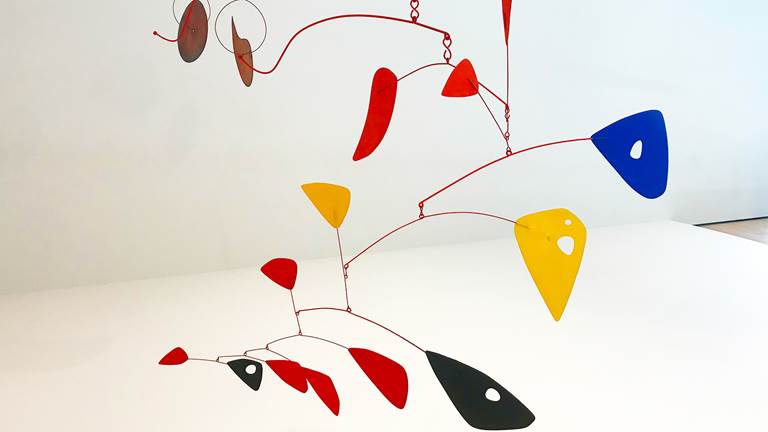
Lesson Exploring Weather
In this 3-5 lesson, students will analyze paintings depicting different types of weather to create an original landscape painting of a weather condition. They will analyze how weather influences culture, daily life, and mood. Students will use the elements of art criteria to discuss and critique paintings.
- Drawing & Painting
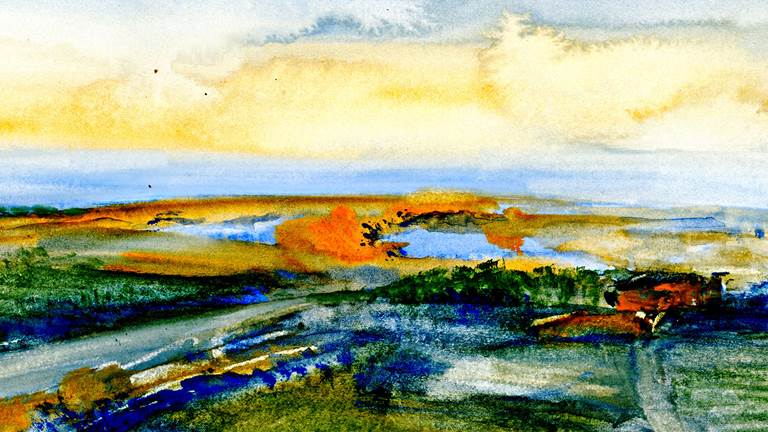
Lesson Five Artists of the Mexican Revolution
In this 9-12 lesson, students will create original artwork demonstrating the style of an early 20th-century artist of the Mexican Revolution. They will research how art was influenced or created in response to major events, artists, and personalities of the Mexican Revolution.
- Grades 9-12
- Visual Artists

Lesson Identity Boxes: Symbols of My Identity
In this 6-8 lesson, students will apply the concepts of symbolic representation to create “identity boxes” representative of their internal and external selves. They will research and explore the work of artists Lucas Samaras and Joseph Cornell to gain a deeper understanding of their use of objects and symbols in “portrait” boxes.
- English & Literature
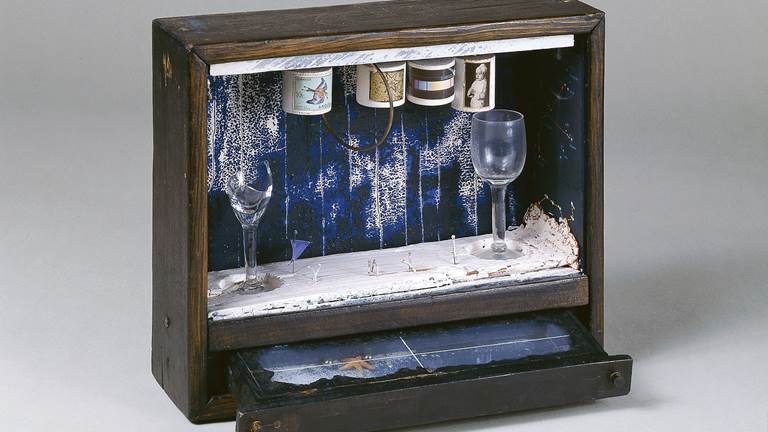
Lesson Joan Miró and Surrealism
In this 9-12 lesson, students will be introduced to the history and concepts of the Surrealist movement to create original artwork. They will research and present findings of Joan Miró’s art and place within the Surrealist movement. Students will apply methods of Surrealism to create an original painting.
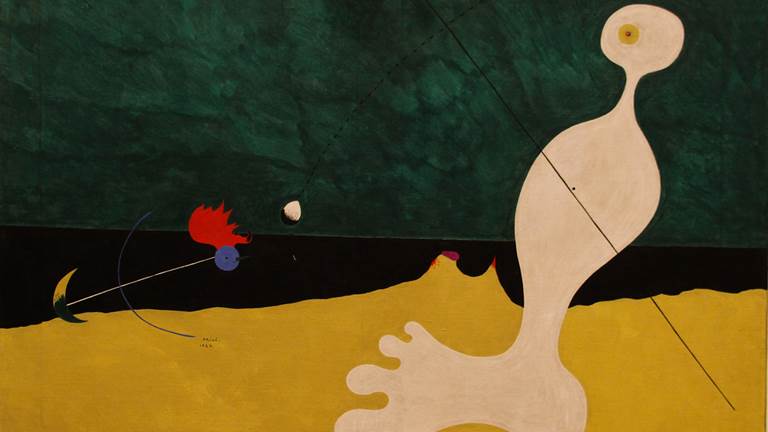
Lesson Mandalas, Polygons, and Symmetry
In this 6-8 lesson, students will create mandalas using mathematical concepts and skills. They will explore symmetry as well as the natural and man-made shapes found in mandalas. They will design a mandala, then analyze other students’ creative work for style and message.
- World Cultures

Lesson Musical Harlem
In this 3-5 lesson, students will learn about the Harlem Renaissance and create original jazz artwork. They will listen to audio samples, analyze elements of jazz, research musicians, and learn how jazz became a unifier between community and culture.
- Jazz & Blues
- African-American History
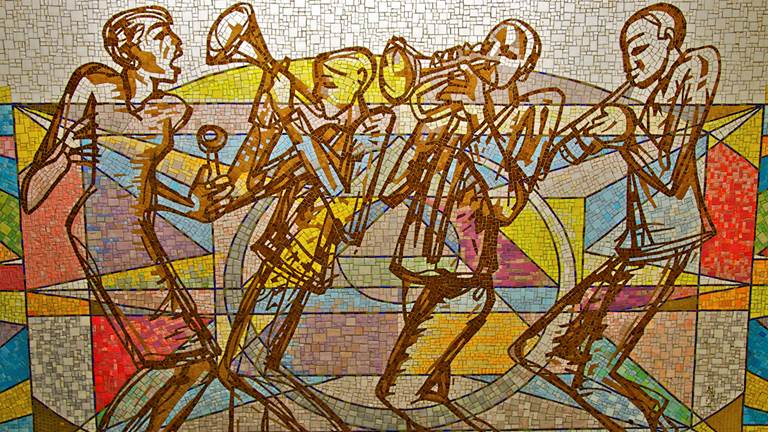
Lesson Painting: The Art of Self Expression
In this K-2 lesson, students will explore elements of art and different artists' techniques to create various styles of paintings. Students will interpret art and describe styles by using key vocabulary terms when discussing paintings.

Kennedy Center Education Digital Learning
Eric Friedman Director, Digital Learning
Kenny Neal Manager, Digital Education Resources
Tiffany A. Bryant Manager, Operations and Audience Engagement
Joanna McKee Program Coordinator, Digital Learning
JoDee Scissors Content Specialist, Digital Learning
Connect with us!
Generous support for educational programs at the Kennedy Center is provided by the U.S. Department of Education. The content of these programs may have been developed under a grant from the U.S. Department of Education but does not necessarily represent the policy of the U.S. Department of Education. You should not assume endorsement by the federal government.
Gifts and grants to educational programs at the Kennedy Center are provided by A. James & Alice B. Clark Foundation; Annenberg Foundation; the Andrew W. Mellon Foundation; Bank of America; Bender Foundation, Inc.; Carter and Melissa Cafritz Trust; Carnegie Corporation of New York; DC Commission on the Arts and Humanities; Estée Lauder; Exelon; Flocabulary; Harman Family Foundation; The Hearst Foundations; the Herb Alpert Foundation; the Howard and Geraldine Polinger Family Foundation; William R. Kenan, Jr. Charitable Trust; the Kimsey Endowment; The King-White Family Foundation and Dr. J. Douglas White; Laird Norton Family Foundation; Little Kids Rock; Lois and Richard England Family Foundation; Dr. Gary Mather and Ms. Christina Co Mather; Dr. Gerald and Paula McNichols Foundation; The Morningstar Foundation;
The Morris and Gwendolyn Cafritz Foundation; Music Theatre International; Myra and Leura Younker Endowment Fund; the National Endowment for the Arts; Newman’s Own Foundation; Nordstrom; Park Foundation, Inc.; Paul M. Angell Family Foundation; The Irene Pollin Audience Development and Community Engagement Initiatives; Prince Charitable Trusts; Soundtrap; The Harold and Mimi Steinberg Charitable Trust; Rosemary Kennedy Education Fund; The Embassy of the United Arab Emirates; UnitedHealth Group; The Victory Foundation; The Volgenau Foundation; Volkswagen Group of America; Dennis & Phyllis Washington; and Wells Fargo. Additional support is provided by the National Committee for the Performing Arts.
Social perspectives and language used to describe diverse cultures, identities, experiences, and historical context or significance may have changed since this resource was produced. Kennedy Center Education is committed to reviewing and updating our content to address these changes. If you have specific feedback, recommendations, or concerns, please contact us at [email protected] .
By using this site, you agree to our Privacy Policy and Terms & Conditions which describe our use of cookies.
Reserve Tickets
Review cart.
You have 0 items in your cart.
Your cart is empty.
Keep Exploring Proceed to Cart & Checkout
Donate Today
Support the performing arts with your donation.
To join or renew as a Member, please visit our Membership page .
To make a donation in memory of someone, please visit our Memorial Donation page .
- Custom Other

- PRO Courses Guides New Tech Help Pro Expert Videos About wikiHow Pro Upgrade Sign In
- EDIT Edit this Article
- EXPLORE Tech Help Pro About Us Random Article Quizzes Request a New Article Community Dashboard This Or That Game Popular Categories Arts and Entertainment Artwork Books Movies Computers and Electronics Computers Phone Skills Technology Hacks Health Men's Health Mental Health Women's Health Relationships Dating Love Relationship Issues Hobbies and Crafts Crafts Drawing Games Education & Communication Communication Skills Personal Development Studying Personal Care and Style Fashion Hair Care Personal Hygiene Youth Personal Care School Stuff Dating All Categories Arts and Entertainment Finance and Business Home and Garden Relationship Quizzes Cars & Other Vehicles Food and Entertaining Personal Care and Style Sports and Fitness Computers and Electronics Health Pets and Animals Travel Education & Communication Hobbies and Crafts Philosophy and Religion Work World Family Life Holidays and Traditions Relationships Youth
- Browse Articles
- Learn Something New
- Quizzes Hot
- This Or That Game New
- Train Your Brain
- Explore More
- Support wikiHow
- About wikiHow
- Log in / Sign up
- Arts and Entertainment
- Art Studies
How to Write an Art Exhibition Review
Last Updated: December 29, 2023 Approved
How to Draft Your Review
How to revise your review, best practices for viewing an art exhibit, expert q&a.
This article was co-authored by Kelly Medford and by wikiHow staff writer, Danielle Blinka, MA, MPA . Kelly Medford is an American painter based in Rome, Italy. She studied classical painting, drawing and printmaking both in the U.S. and in Italy. She works primarily en plein air on the streets of Rome, and also travels for private international collectors on commission. She founded Sketching Rome Tours in 2012 where she teaches sketchbook journaling to visitors of Rome. Kelly is a graduate of the Florence Academy of Art. wikiHow marks an article as reader-approved once it receives enough positive feedback. In this case, 95% of readers who voted found the article helpful, earning it our reader-approved status. This article has been viewed 300,195 times.
Art exhibition reviews provide a description and critical analysis of an art exhibit. This helps visitors know what to expect from the exhibit and gives feedback to the artist. To write an effective art exhibition review, visit the exhibit, take detailed notes, and talk to the artist, a docent, or a curator, if possible. Then, discuss your observations and opinions in your review and revise your work before finalizing it.
Things You Should Know
- Provide the who, what, where, when, and why of the exhibit in your introduction to paint a clear picture for the reader.
- Give a detailed description of the exhibit, including how each piece is displayed, so readers can know what to expect.
- Take a critical look at the exhibit and offer your opinions on the exhibit. Mention if it was successful in portraying its core themes and ideas.

- Write, “Agatha Tompkin’s The Friends You Have opened at the Contemporary Art Center on Friday, August 23rd and runs through November 1st. Her watercolors and mixed media works explore modern relationships and how communities differ.”

- You might say, “Tompkin’s watercolors are grouped on two adjacent walls in simple 11 by 14 in (28 by 36 cm) black frames. Hanging on the opposite walls, her mixed-media work consists of 5 by 7 ft (1.5 by 2.1 m) canvases that are arranged in a line. Visitors can walk alongside the artwork for a visual experience.”
Tip: While many artworks are meant to be viewed, there are other ways to interact with art. Sometimes art is meant to be listened to, and you may be immersed in an installation. Think about how you’re interacting with the artwork in this exhibit.

- Explain the artist’s stated thesis and how well they expressed it in their exhibit.
- Identify parts of the exhibit that worked well. If there were works that didn’t support the main idea, explain how the artist could have better incorporated them.
- Consider how this exhibit relates to art history as a whole. Where would it fit in? How does this art compare to existing works? How does it express common themes?

- For instance, a curator may not face any unique challenges while hanging framed oil paintings on a wall. However, they might struggle with installing a sculpture that hangs from the ceiling or an installation that has moving parts.
- You might write, “While the framed watercolors were easy to hang on the exhibit walls, the curators struggled to install the single mixed-media sculpture that Tompkins created from found objects. The sculpture is designed to look like it’s floating between the ceiling and the floor, so it must be hung using thin wires.”

- If this is for class, your instructor likely told you which style guide to use. Format your paper and any citations that you use according to the rules for that style guide.

- Don’t ask someone who’s unfamiliar with art exhibition reviews to critique your paper because they may unintentionally give you bad advice.

- Reading your review aloud will help you spot areas that don’t flow well. Re-write these sentences to make them better.

- Try to get someone else to proofread it for you because it’s hard to spot your own errors.

- If you have any questions, ask your instructor so that you don’t accidentally make an error on your assignment.

- Make several passes through the exhibit so you can make new observations and connections between the works.
- Look at the art from different angles and distances. While it’s important to examine each piece closely, you also want to take in the entire exhibit as a whole to see how the artist evoked their theme.

- Document how the artist created each image, such as how they used lines, shapes, colors, shading, textures, patterns, and light. You’ll use this information to develop your discussion on form.
Ask yourself questions like:
Why are the works of art ordered or arranged this way?
Does a particular work stand out from the rest?
Is there a theme or a subtext to the exhibition?
Does the theme or thesis become obvious as I walk through the space?
How is this exhibition different from others I've seen?

- Ask yourself questions like the following: Based on what I see, what do I think the artist is trying to say? What does the exhibit make me think about? How do I feel?

- Ask a docent questions like, “What was the artist hoping to achieve in this exhibit?” “What inspired the artist to create these works?” and “What are the core pieces of this exhibit?”
- Ask a curator questions like, “Why did you arrange the artwork like this?” “What challenges did you face while installing the exhibit?” and “What instructions did the artist give for hanging their work?”

- For instance, do you notice visitors avoiding a certain piece? Are they drawn to some pieces more than others? Which pieces are generating conversation? What types of comments do you overhear?
- If you’re planning to publish your review, ask fellow visitors to give you quotes that you can use for your review. Get their name so you can credit them.

- Wait until after you view the exhibit so that your initial impressions aren’t influenced by the artist.
Tip: Read the artist statement for more insight into what inspired the exhibit.

- Your review should focus on your own ideas, not on what other people said.

- Read art exhibition reviews written by professional critics to help you understand the typical format. [15] X Research source Thanks Helpful 0 Not Helpful 0
- Always have materials ready for taking notes or recording conversations. Thanks Helpful 0 Not Helpful 0
- Don't overuse superlatives. If you fall into the trap of calling every artwork you see "breathtaking," "magnificent" or "flawless," you'll soon come off as an uninformed critic. Likewise, calling everything you dislike "appalling," "disgusting," or "terrible" will undermine your ideas. Thanks Helpful 1 Not Helpful 0

You Might Also Like

- ↑ https://www.ocadu.ca/Assets/content/teaching-learning/WLC/Online+Resources/Writing+Art+Reviews.pdf
- ↑ https://ualr.edu/art/art-history-resources/papers-and-projects/guidelines-for-analysis-of-art/
- ↑ http://arthistoryteachingresources.org/2017/09/museums-writing-exhibition-reviews/
- ↑ https://www.uwgb.edu/malloyk/art_criticism_and_formal_analysi.htm
- ↑ http://www.csus.edu/indiv/o/obriene/art112/Readings/Writing_a_Review_of_an_Exhibition.pdf
About This Article

To write an art exhibition review, start with an introductory paragraph that introduces a thesis about the exhibit. Then, break the body of your review up into individual sections that each focus on specific artwork in the exhibition. In each section, make sure you include descriptions of the art, your analysis and interpretation of the artwork, a consideration of the space it was displayed in, and finally your evaluation. To conclude your review, write a conclusion that ties together your main points and summarizes your review. To learn how to analyze and critique an art exhibit, scroll down! Did this summary help you? Yes No
- Send fan mail to authors
Reader Success Stories
Prabuddha Ghosh
Jun 7, 2019
Did this article help you?
Jessica Perez
Oct 9, 2017
Nov 7, 2016

Featured Articles

Trending Articles

Watch Articles

- Terms of Use
- Privacy Policy
- Do Not Sell or Share My Info
- Not Selling Info
Get all the best how-tos!
Sign up for wikiHow's weekly email newsletter
- Skip to main content
- Skip to primary sidebar
- About Art Class Curator
- Media & Press
- Programs for Schools
- Member Login
- Search this website
Art Class Curator
Hands-on and Minds-curious Art Learning
Experience Art Book and Card Deck on Kickstarter!
August 24, 2015 2 Comments
10 Artworks Perfect for an Art Criticism Lesson
Through my many years of teaching, I’ve accumulated a nice list of artworks that are perfect to discuss with students and teach them how to analyze art. These artworks spark lots of interesting ideas, have easy to notice design choices that contribute to the meaning and always lead to a great art criticism discussion (or a great student-written essay) with the students.
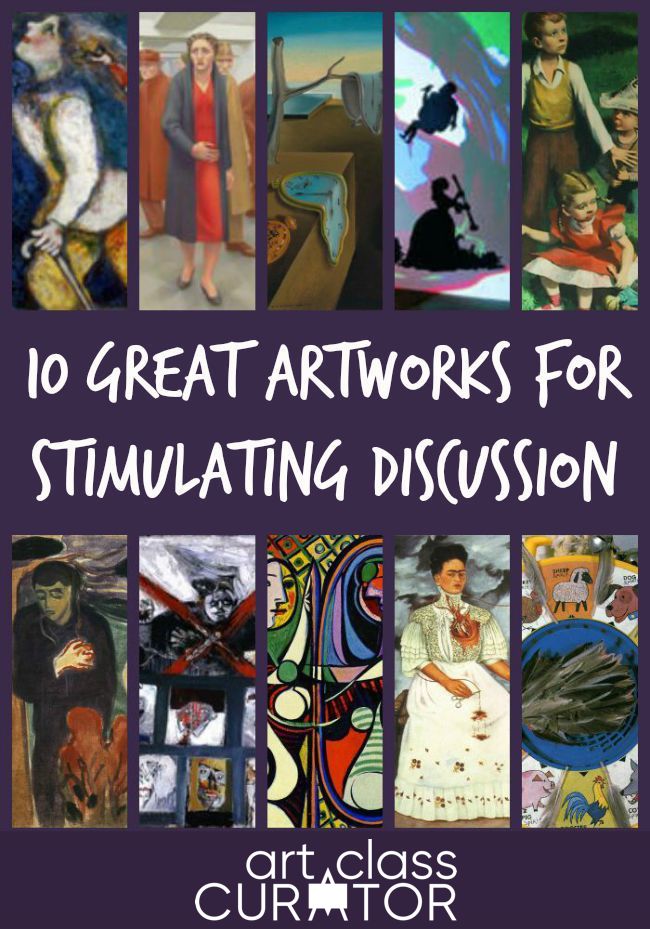
These artworks are great for high school and college students, but many work for elementary and middle as well. You can use your judgment to decide what works best for your students.
The Four Steps of Art Criticism Lesson Plan
I created this list for my lesson on the art criticism steps available for sale. The Four Steps of Art Criticism lesson teaches students how to analyze art through the art criticism steps of description, analysis, interpretation, and evaluation. This resource includes a lesson outline (pdf), a PowerPoint, a written assignment instructions handout (pdf and editable .doc), a quiz (pdf and editable .doc), and a list of artworks including (but not limited to) the ones below. Buy it now for $14 , and use it in your classroom tomorrow!

This lesson covers the four steps of art criticism using artworks. Explore description, analysis, interpretation, and evaluation with your students using engaging activities and examples.
Ten Artworks Perfect for Art Criticism with Students
Most of these are not in the public domain. I have included small thumbnails for your reference. Click the picture to view a larger image.
Marc Chagall, Young Girl in Pursuit , ca. 1927-28
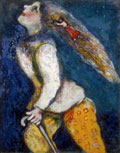
This one is so simple and straight-forward, but it always sparks the imagination of the students.
Questions to Ask: How does this artwork make you feel? What choices does the artist make to make you feel that? Who is this woman? Why is there a woman in her hair? What is the meaning of this artwork?
Salvador Dalí, Persistence of Memory , 1931
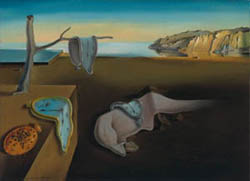
Everyone knows this one. I read some study one time that said Salvador Dalí was the most recognized artist name among people interviewed on the street. I found that to be fascinating. From the melting clocks to the sleeping head, to the ants crawling all over the pocket watch, to is that a snake coming out of his nose?, this one has a lot for students to unpack.

Get the Full Lesson!
This Lesson is in The Curated Connections Library!
Find the full lesson from this post along with hundreds of other art teaching resources and trainings in the Curated Connections Library. Click here for more information about how to join or enter your email below for a free SPARKworks lesson from the membership!
John Feodorov, Animal Spirit Channeling Device for the Contemporary Shaman , 1963

I wrote more about this one on the post: 5 Artworks to Intrigue your High Schooler .
Frida Kahlo, The Two Fridas , 1939

This one is also on 5 Artworks to Intrigue your High Schooler . Read more there. 🙂
Edvard Munch, Separation , 1896

Students love coming up with stories about this one. He is having a heart attack, and the woman is an angel taking him away. The woman is the ghost of his wife who has passed. And more, lots of great stories. The artist’s use of line, color, and contrast adds meaning to the student’s interpretations.
Luis Felipe Noé, Cerrado por brujería [Closed by Sorcery] , 1963
![art critique essay example Luis Felipe Noé, Cerrado por brujería [Closed by Sorcery], 1963](https://artclasscurator.com/wp-content/uploads/2015/08/Luis-Felipe-Noe-300x239.jpg)
This is one of my all time top artworks to discuss with students. I usually show it on the first day of class in my community college art appreciation class. I wrote a whole post about it here .
Pablo Picasso, Girl before a Mirror , 1932
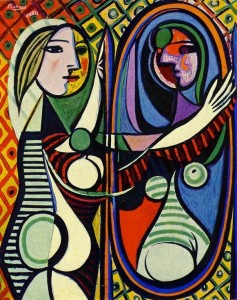
This painting made me weep when I saw it the first time. It’s stunning in person. Read more about it on 5 Artworks that Promote Introspection . This is a great one to have students write about at the beginning of class.
Lawrence Beall Smith, Don’t Let That Shadow Touch Them , 1942
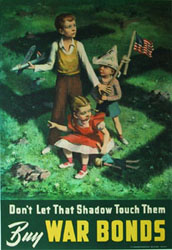
I love connecting history and art. I include this piece of propaganda art on one of my tests for students to write about. You would be surprised how many students don’t recognize the swastika. In addition to discussing the power images have on our feelings and decision, the historical significance of the image is an important discussion to have with the students.
George Tooker, The Subway , 1950

Creepy, suspicious men and multiple perspectives make this one a fun one to talk about with students. The lone, solitary woman with the concerned expression makes us think, and why is she holding her stomach? Lots to talk about.
Kara Walker, Darkytown Rebellion , 2001

This one has some sensitive subject matter. I wouldn’t hesitate to use this for a college class, but only you can decide if it works for your students. I actually got in an argument with one of my friends in front of one of Kara Walker’s artworks like this one. I love art that sparks opinion and discussion. I don’t shy away from big topics in my classroom. Art opens up important dialogues, so I think it is important to let those happen in the classroom. After students look and figure out what is going on through art criticism, we discuss the element of the projection and how the viewer can become a part of the art by standing in between the light and the wall. It leads to some interesting thoughts.
You May Also Enjoy These Posts:

Reader Interactions
September 4, 2015 at 1:24 pm
Hello I enjoy you art lessons. I teach three year old students and I would like to know how to show them art and I would like to know how to ask the correct questions to help them think about art. Any help would be lovely. Nancy
September 4, 2015 at 6:38 pm
Hi Nancy! Here are some of my posts that might help you: How to Look at Art with Toddlers and Preschoolers , A video of me talking about art with my 2yo , 10 Activities to Engage with Works of Art , Another Video of me talking with my 2yo about art , and How to Look at Art with Kids . Hope this helps! 🙂
Leave a Comment Cancel reply
Your email address will not be published. Required fields are marked *
This site uses Akismet to reduce spam. Learn how your comment data is processed .

Get Art Inspiration To Your Inbox!
Free Worksheets!
*Free Bundle of Art Appreciation Worksheets*
In this free bundle of art worksheets, you receive six ready-to-use art worksheets with looking activities designed to work with almost any work of art.
Home — Essay Samples — Arts & Culture — Art and Religion — Critique Over An Art Gallery
Critique Over an Art Gallery
- Categories: Art and Religion Critical Theory
About this sample

Words: 898 |
Published: Sep 19, 2019
Words: 898 | Pages: 2 | 5 min read

Cite this Essay
Let us write you an essay from scratch
- 450+ experts on 30 subjects ready to help
- Custom essay delivered in as few as 3 hours
Get high-quality help

Prof. Kifaru
Verified writer
- Expert in: Arts & Culture Sociology

+ 120 experts online
By clicking “Check Writers’ Offers”, you agree to our terms of service and privacy policy . We’ll occasionally send you promo and account related email
No need to pay just yet!
Related Essays
2 pages / 690 words
3 pages / 1569 words
3 pages / 1371 words
3 pages / 1364 words
Remember! This is just a sample.
You can get your custom paper by one of our expert writers.
121 writers online

Still can’t find what you need?
Browse our vast selection of original essay samples, each expertly formatted and styled
Related Essays on Art and Religion
Johnny Cade, a character from S.E. Hinton’s The Outsiders, represents an important symbol in the novel, portraying the loss of innocence among youth. The novel depicts the protagonists, Ponyboy Curtis and his friends, as they [...]
The character of Oedipus in Sophocles' plays Oedipus Rex and Oedipus at Colonus is renowned for his tragic fate, which is characterized by the fulfillment of a prophecy that he would commit patricide and incest. The story of [...]
Madiba Riddim is a song by Canadian rapper Drake, released in 2017 on his project More Life. The song is a tribute to Nelson Mandela and features a sample of the iconic South African anti-apartheid leader's speech, "I am the [...]
Sophocles' Antigone explores the complex relationship between the state and the individual through the story of Antigone, a young woman who defies the law to bury her brother. The play presents a conflict between two opposing [...]
As I enter high school, I have set ambitious goals for myself that will guide me towards success and personal growth. These goals are not solely focused on academic achievement but also on developing important life skills and [...]
The various groups of people that have existed throughout history (both groups that no longer exist, and groups that are still in existence today) have a number of things in common, as well as a multitude of differences. Two [...]
Related Topics
By clicking “Send”, you agree to our Terms of service and Privacy statement . We will occasionally send you account related emails.
Where do you want us to send this sample?
By clicking “Continue”, you agree to our terms of service and privacy policy.
Be careful. This essay is not unique
This essay was donated by a student and is likely to have been used and submitted before
Download this Sample
Free samples may contain mistakes and not unique parts
Sorry, we could not paraphrase this essay. Our professional writers can rewrite it and get you a unique paper.
Please check your inbox.
We can write you a custom essay that will follow your exact instructions and meet the deadlines. Let's fix your grades together!
Get Your Personalized Essay in 3 Hours or Less!
We use cookies to personalyze your web-site experience. By continuing we’ll assume you board with our cookie policy .
- Instructions Followed To The Letter
- Deadlines Met At Every Stage
- Unique And Plagiarism Free
Sample details
Art Critique
- Views: 1,227
Related Topics
- Performing arts
- Postmodernism
- Abstract Art
- Pablo Picasso
- Printmaking
- Art analysis
- Architecture
- Harlem Renaissance

Art Critique Example
This untitled pastel painting by Ellen Plankey depicts a young woman sitting on a blanket. She is wearing a dark blue skirt and a baby blue cloth wrapped around her head. Positioned to her right, she gazes into the distance. The striking contrast between light and shadow accentuates one of her breasts, while the other is obscured. The scene is adorned with leafy bushes, creating a natural setting. The pale orange sky, reminiscent of faded salmon, subtly peeks through the foliage.
The shadows on her body have splotches from the openings between the leaves. The overall effect is very gentle and delicate. “Young Girl on Blanket” incorporates intermediate colors such as soft shades of pink, blue, green, and orange. All the lines in this painting are curvaceous, including the rippling edge of the blanket that seems to blend with the grass, giving it a rounded appearance like a boxy oval rather than a rectangle. The girl’s body has gentle curves that subtly highlight her femininity. Additionally, the only solid lines in the painting are the outlines of her figure and clothing.
ready to help you now
Without paying upfront
All of the shrubbery surrounding the girl has a soft and fuzzy appearance, causing it to blend into the background and allowing the girl to stand out. The colors around the girl, although subdued, are darker compared to her fair skin tone, drawing attention to her instead of her surroundings. The first thing that caught my eye was her baby blue head wrap, and then my gaze drifted down to the rest of her. The painting titled “Young girl on Blanket” immediately captivated me. I was highly fascinated by the softness portrayed in the artwork.
It brought back memories of a painting from my great grandmother’s collection, one that I have seen before, and immediately a feeling of nostalgia washed over me. Even though I have never experienced sitting topless in a field, I could easily connect with the image. It portrays a beautiful day, with the sun either beginning to set or about to rise, and the girl soaking in the surrounding beauty. Additionally, the girl’s body language adds to the intrigue of the painting, with her appearing shy as she supports her weight with one arm at her side while the other is tucked between her legs.
She’s looking off to her right, but her head is tilted down as if she is shying away or embarrassed by something. Additionally, there is a slight grin on her face which contrasts the rest of her body language and suggests a mischievousness that provides a clue to her true thoughts. The pure and soft colors in the painting may indicate that she is just beginning to emerge from her reserved nature. It is evident that she has reached puberty as her breasts have developed, and her defined waist and hips are noticeable as she leans over, hinting at the possibility that this might be her first encounter with someone.
Despite the possibility of alluding to an experience, the essence of “Young Girl on Blanket” remains pure and sweet. The depicted young woman sits topless in a field with a shy beauty about her, as she shies away. However, her slight smirk is endearing, reflecting the artist’s intention. It is likely that the young girl is clandestinely venturing out with someone, experiencing something for the first time. Consequently, she appears shy and coy, yet simultaneously excited and anticipatory. This explains why she maintains a subtle smile throughout. Personally, I thoroughly appreciate “Young Girl on Blanket”.
This painting evokes a sense of nostalgia. It reminds me of my childhood, specifically the moments spent in my great grandmother’s house where I used to admire her delicate and feminine paintings, much like this one. The colors and the gentle brush strokes surrounding the girl captivate my attention, drawing all focus towards her. These strokes almost serve as a protective cushion, partially concealing her and leaving room for curiosity. The girl is enveloped by her surroundings, which resemble a cloud, particularly the baby pink blanket she sits on. This element contributes to the overall soft and airy feel of the artwork.
The leaves appear blurred and almost fuzzy, giving the impression of a dark backdrop rather than actual shrubbery. Despite featuring partial nudity, I appreciate the sweetness of the painting. The girl’s skirt has a cute A-line shape, with only the waistband fitting closely, which prevents her from appearing overly sexualized. In general, I admire the beauty of “Young Girl on Blanket.” Typically, when nudity is depicted, I feel somewhat uncomfortable observing it. However, in this particular artwork, I simply admire both the girl and her environment.
Cite this page
https://graduateway.com/art-critique-example/
You can get a custom paper by one of our expert writers
- Photography
- Cinematography
Check more samples on your topics
Art critique/analysis assignment “islamic art”.
Islamic art is probably the most available material manifestation of the complicated and multifaceted culture, which appears mysterious to a foreigner. The object which impressed me the most is the bowl with geometric and vegetal embellishment, attributed to the 10th century. The bowl was produced in Northeastern Iran of transparent glaze with white slip covering.
Art Critique Reproduction in the Age of Industrial Revolution in Art in the Age of Mechanical Reproduction by Walter Benjamin
Walter Benjamin has written a groundbreaking essay “Art in the Age of Mechanical Reproduction" in 1936. He critiqued the way the images are reproduced and the motivation that drives the idea of reproduction in the Age of Industrial Revolution W. Benjamin was concerned of loosing “aura" of art, The writer obscene/ed that the methods of
Is Street Art Really Art Art
Street art originated in the late sixtiess with the coming of graffito and tagging in Philadelphia and New York City ( Walsh, 1996: 3 ) . It has been developing of all time since as new manners, signifiers and techniques are created and utilised by street creative persons ( Walsh, 1996: 12 ) . But
Performance Art, Conceptual Art, Installation Art
A sculpture intended by the artist to move is called ________ sculpture. a. a kineticb. an armaturec. a motion-detector d. a fluted A. Kinetic All sculptures have this characteristic in common: a. they exist in three-dimensional spaceb. they are made of solid materialsc. they are meant to last for many years d. they are created for beauty e. all of these answers A.
Critique Of Recitatif Research Paper Critique
human communication
Critique Of Recitatif Essay, Research Paper Critique of Recitatif Sometimes, the mere fact of being from a different race can act upon people ’ s manner of thought or attitude toward other people with different colour tegument. That is the subject of Toni Morrison ’ s short narrative Recitatif. In the narrative, two eight twelvemonth old
A Spoon for the Art Critique
Imagine a note on the wall resembling a G clef/Treble clef on a sheet of music composition hanging on one wall that could be used to toss salad this describes my art project. Last semester, I took the 3D Design class, In the class, I made paper structures, Q-tip and wooden structures, plaster sculptures, and
The Effectiveness of Art Critique Programs for Addressing Disciplinary Problems
Ricky was a high school student facing expulsion after multiple disciplinary infractions when a group of his peer mediators decided he deserved a second chance. Ricky was enrolled in his high school’s restorative justice program. Second Chances, where he attended daily group sessions teaching respect, empathy. and community involvement. For the first time in Ricky's
The Auction of a Matisse and the Art Critique Dealers Association of America
If your favorite masterpiece, a Matisse, is up for auction, You are bidding for it against a dazzling array of eccentric art dealers. Should you keep bidding as the price gets higher? Is it a bargain or a worthless forgery? You must decide quickly, but you will never know unless you outbid the competition. What
Art Deco And Rene Lalique Art
Art deco a popular international art design motion of the 1920 's to 1940 's influenced the cosmetic humanistic disciplines like architecture, interior design and industrial design along with ocular humanistic disciplines such as manner, pictures, the in writing humanistic disciplines and movies. This manner came across as elegant, glamourous, functional and modern in those

Hi, my name is Amy 👋
In case you can't find a relevant example, our professional writers are ready to help you write a unique paper. Just talk to our smart assistant Amy and she'll connect you with the best match.

IMAGES
VIDEO
COMMENTS
STEP #3. Provide a clear thesis statement. A thesis here would be the main idea that would reflect your vision of an artistic piece. Don't underestimate the importance of a thesis! It will guide you through writing the entire essay. It will also help your readers understand your art criticism better.
🎨 Artwork Critique Examples. To provide a better understanding of writing an art criticism essay, we'd like to give you a couple of examples to think about. These small samples will help you choose the proper language and paragraph structure to create a good artwork analysis. We hope you'll find our art critique essay examples inspiring.
Take a look, put down what you see, note some general details and facts. We've prepared two examples to show better how to write an art critique step-by-step. Example 1 - David of Michelangelo, example 2 - Girl with a Pearl Earring by Johannes Vermeer. Questions to Answer. Example 1.
Learn how ten works of art criticism from the 20th century shaped the mainstreaming of formalism, conceptualism, and institutional critique in American art. From Clement Greenberg's "American-Type" Painting to Harold Rosenberg's "The American Action Painters", discover the key ideas and artists that shaped the art world.
1. Gather basic information about the work. This is the sort of thing you'd find on a museum or gallery label, or in the caption in an art book. Knowing the background of a piece can make a big difference in how you interpret and understand it. Start your critique by providing the following information:
An art critic will begin by taking a step back and viewing the piece as a whole, examining its general composition, colors, and shape. After that, they will walk closer to examine its nuanced details, paying special attention to the artist's application of lines, forms, and textures.
THE FORMAL ART CRITIQUE: Verbalizing the Art Experience. One way to structure an art critique, no matter the medium, is to discuss the work through a four step process: Description, Analysis, Interpretation, and Evaluation. Organized as such, a critique resembles the scientific method of investigation: begin with observable facts and build to ...
It can't be said to be the main focus, but it's a crucial element in the composition and is the support of the main theme. Step 6. Analyze the Elements of the Art. After analyzing the main subject, it's time to analyze the rest of the elements used in the work of art. For your reference, the elements of art include:
art criticism, the analysis and evaluation of works of art.More subtly, art criticism is often tied to theory; it is interpretive, involving the effort to understand a particular work of art from a theoretical perspective and to establish its significance in the history of art.. Many cultures have strong traditions of art evaluation. For example, African cultures have evaluative traditions ...
What is a critique? A critique is an oral or written discussion strategy used to analyze, describe, and interpret works of art. Critiques help students hone their persuasive oral and writing, information-gathering, and justification skills. Description. Describe the work without using value words such as "beautiful" or "ugly":
Identify the theme being communicated in the art. This is the first step when writing an art critique essay. It helps you have an idea of what the piece of art is about. Create an outline. This will help you recognize the artist and the features of his work; the materials used and the location.
Critique is a fundamental part of the artistic process, providing artists an opportunity to get a fresh pair of eyes on their artwork. This video explains concrete, practical strategies that both art teachers and art students can apply to group critiques in the classroom. Discussion led by Art Prof Clara Lieu and Teaching Artists Cat […]
How to Give Yourself a Critique Demonstration. The sample critique sheet above will give you a starting place to create critique demonstrations on the fly. To see a critique demonstration in action, the below video showcases a great artist approaching their art with an ongoing critique and analysis. (Image Source)
An art critique essay is a written evaluation of a work of art, which can be a painting, sculpture, installation, or any other form of artistic expression. The essay should provide a detailed analysis of the artwork, including its style, techniques, symbolism, and overall impact.
Let's take a brief look at these types with examples: Art Criticism Essay: A critical essay analyzing and evaluating an artwork, its elements, and its meaning. ... We hope that the art essay examples we've explored have provided you with inspiration for your own essay. Art offers endless possibilities for analysis, and your essay is a chance to ...
Outline the game plan before the game begins. Begin by establishing the criteria for your art critique so students know exactly what to expect. Decide how you want the critique to flow, and stick to the same basic steps for each work being discussed. One way to organize a critique is to discuss an artwork in four ways, through description ...
2. Ask a fellow art student or critic to give you feedback on your work. Give your review to someone who has experience in writing art exhibition reviews so you can get feedback. Ask them to identify areas that need improvement, as well as errors that need to be corrected. Use their feedback to revise your paper.
Edvard Munch, Separation, 1896. Edvard Munch, Separation, 1896. Students love coming up with stories about this one. He is having a heart attack, and the woman is an angel taking him away. The woman is the ghost of his wife who has passed. And more, lots of great stories.
Critique Over an Art Gallery. The art gallery I chose is called the Silo gallery, it is the largest purpose built in central Texas. It features 3D sculptures and different art forms by a dozen of brilliant artists. The Silo gallery was built by Ralph and Jean Petley in 1985. Chester John and Elissa Beach then bought the Silo in 2004.
How to write a critique. When you're ready to begin writing your critique, follow these steps: 1. Determine the criteria. Before you write your critique, it's helpful to first determine the criteria for the critique. If it's an assignment, your professor may include a rubric for you to follow. Examine the assignment and ask questions to verify ...
1. Create your own art critique for The Raft of the Medusa. The Raft of Medusa was created 1818-1819 by Theodore Gericault. The painting shows a group of men on a raft in the middle of the ocean, some dead mean, some men waving clothes to signal a ship, dark gloomy sky, and a huge wave to the left of the piece.The artist uses two triangles as the main part of the composition.
Art Critique Example. This untitled pastel painting by Ellen Plankey depicts a young woman sitting on a blanket. She is wearing a dark blue skirt and a baby blue cloth wrapped around her head. Positioned to her right, she gazes into the distance. The striking contrast between light and shadow accentuates one of her breasts, while the other is ...
Example Art Gallery Report Essay EXAMPLE ART GALLERY REPORT! Portrait 1 My first portrait I am going to going to critique is a oil on canvas piece by Scott Jones B. This first portrait I am going to critique is called going on four. The first thing you immediately see about the